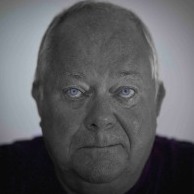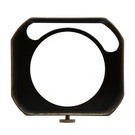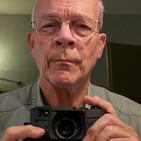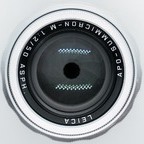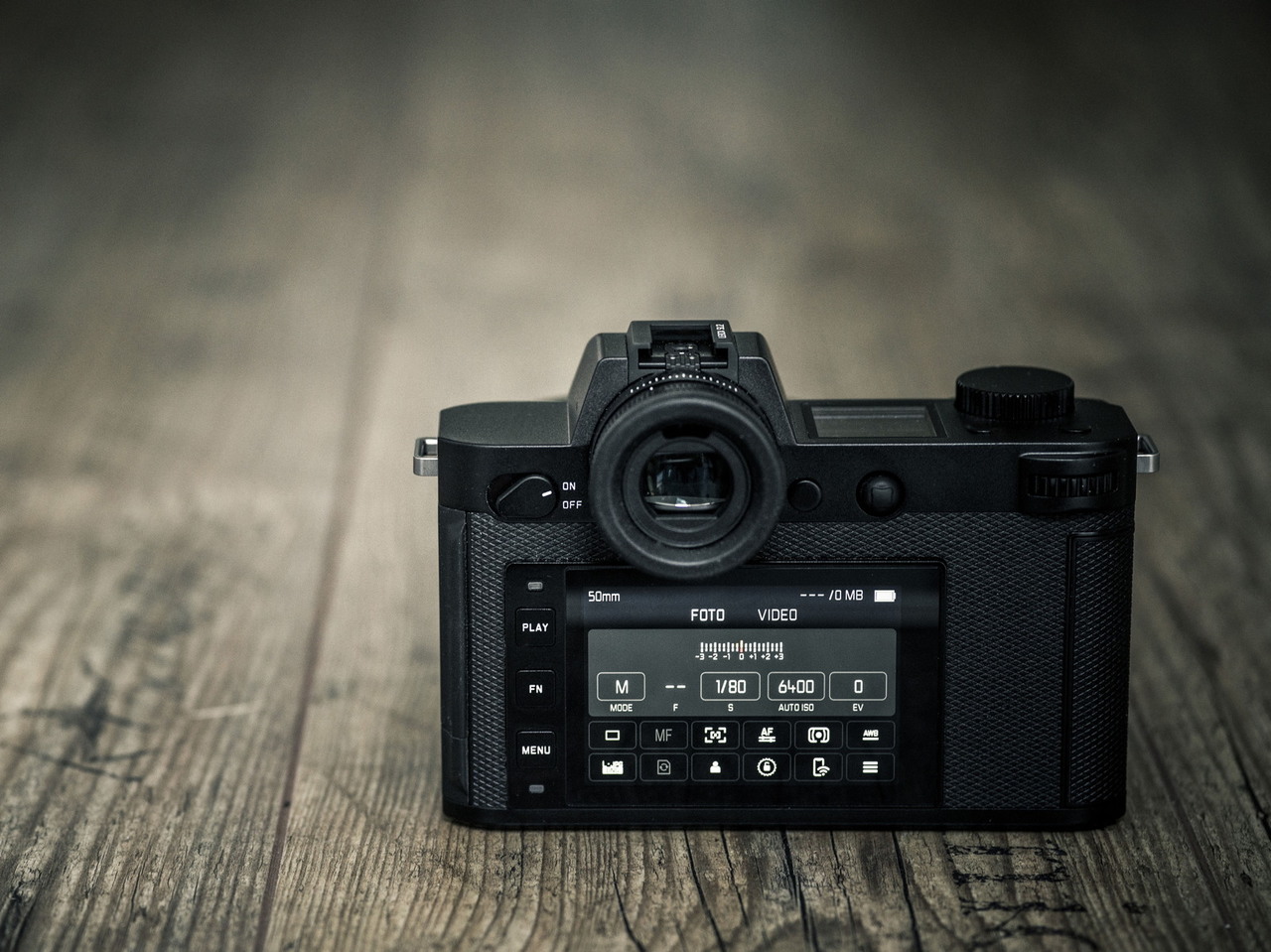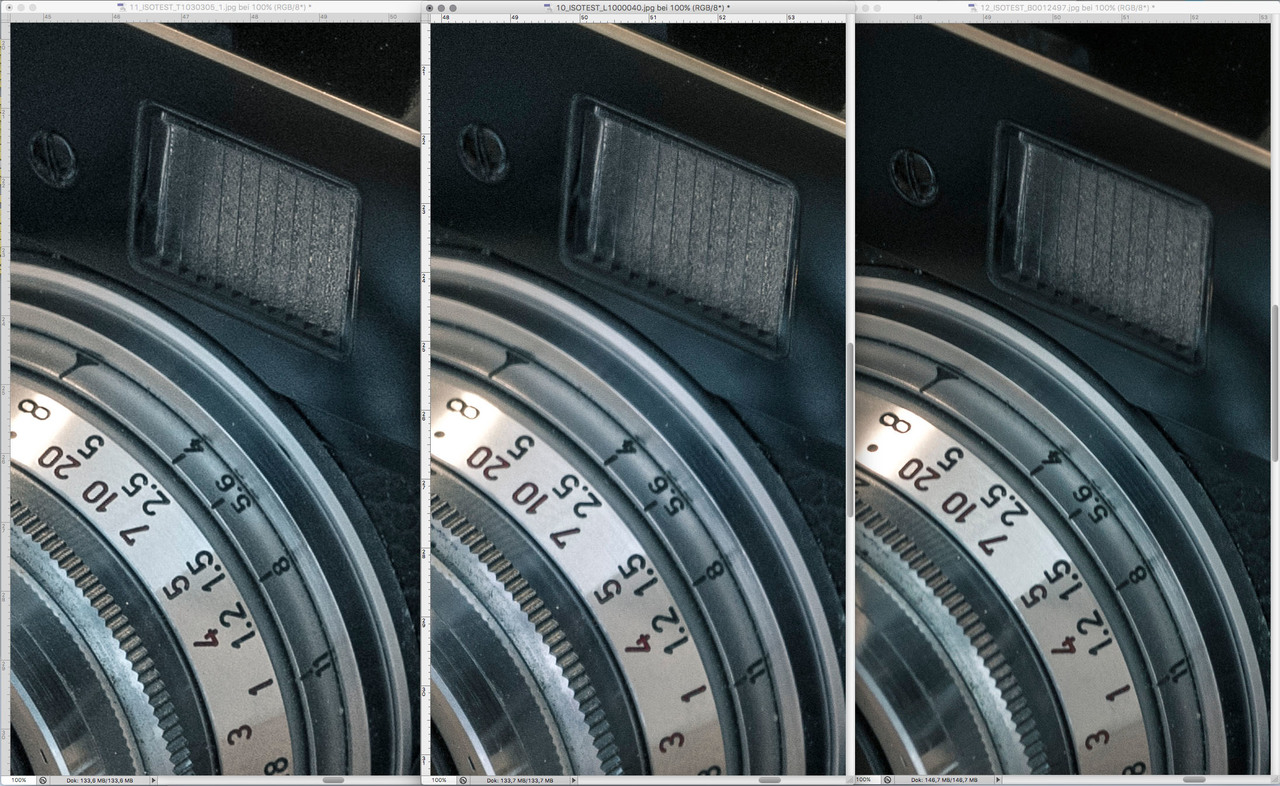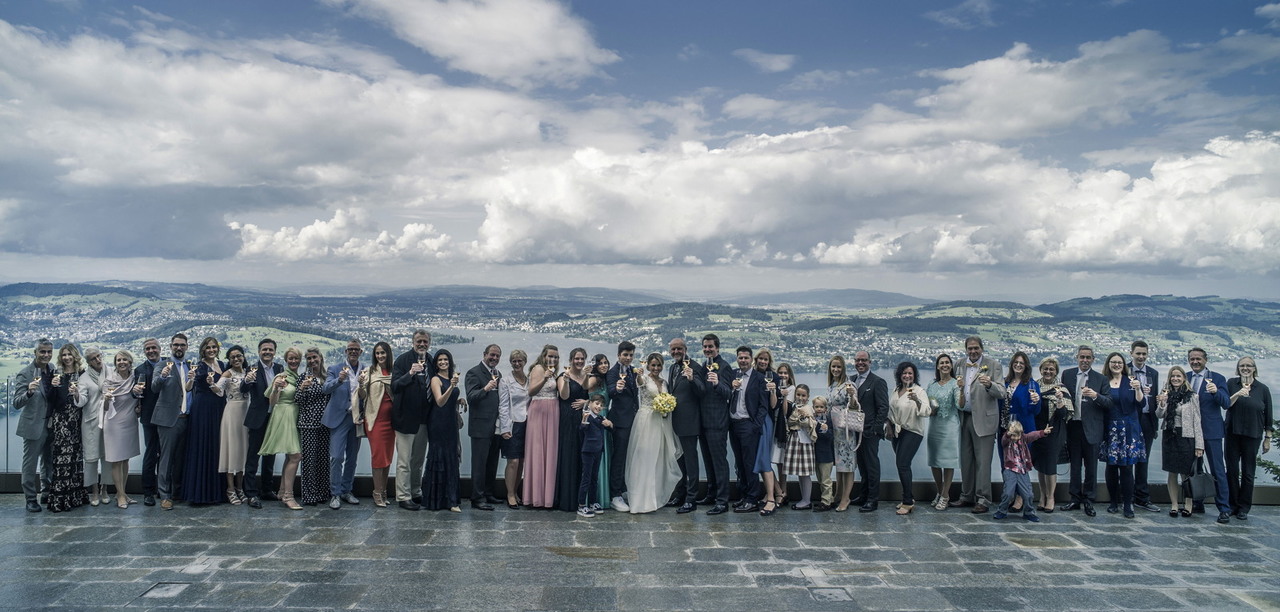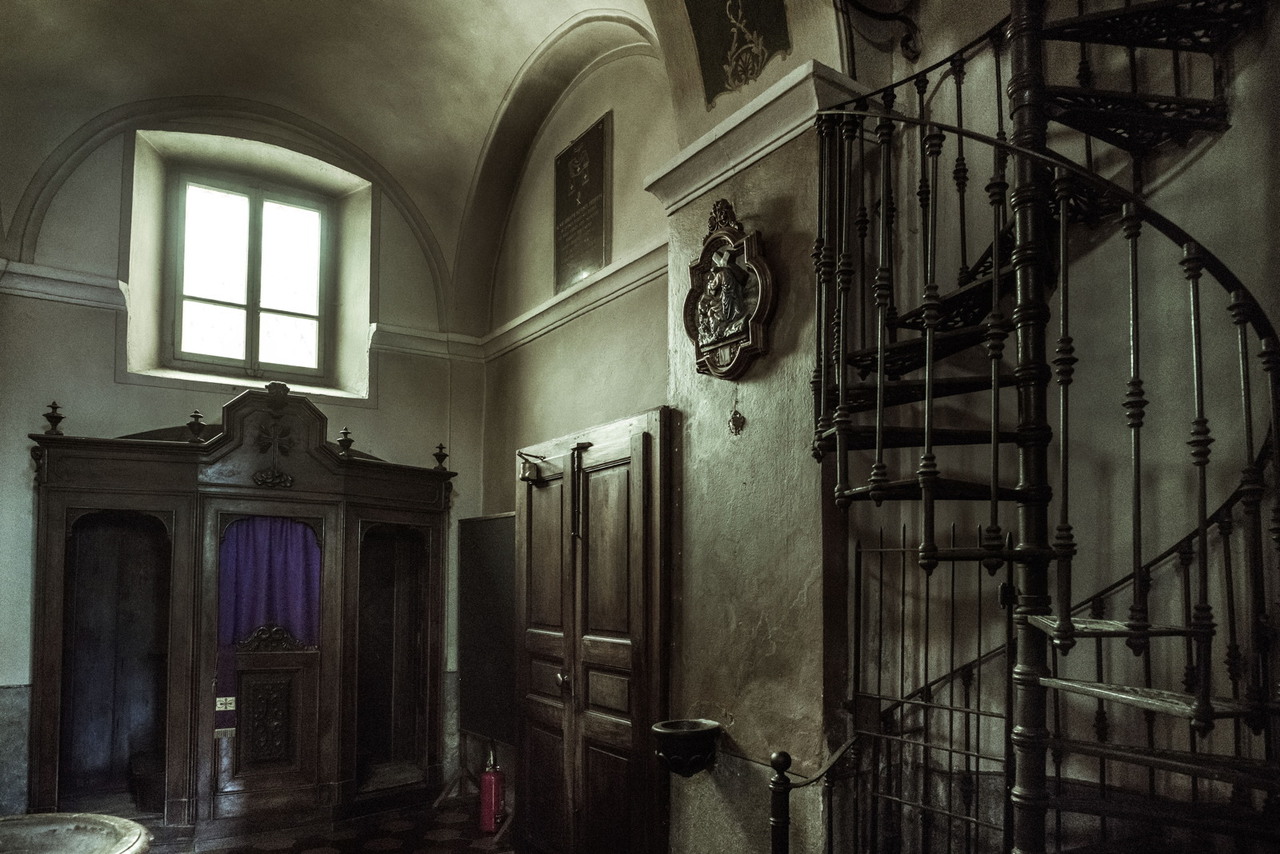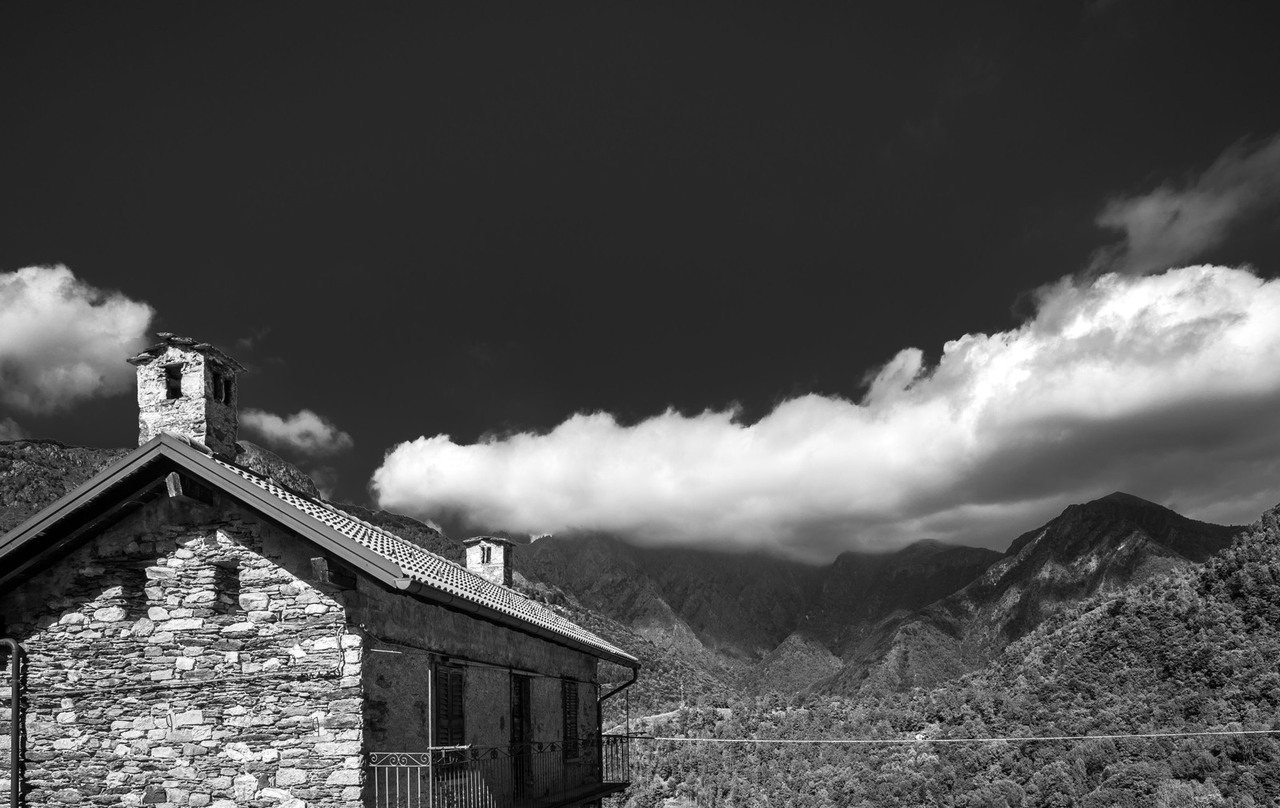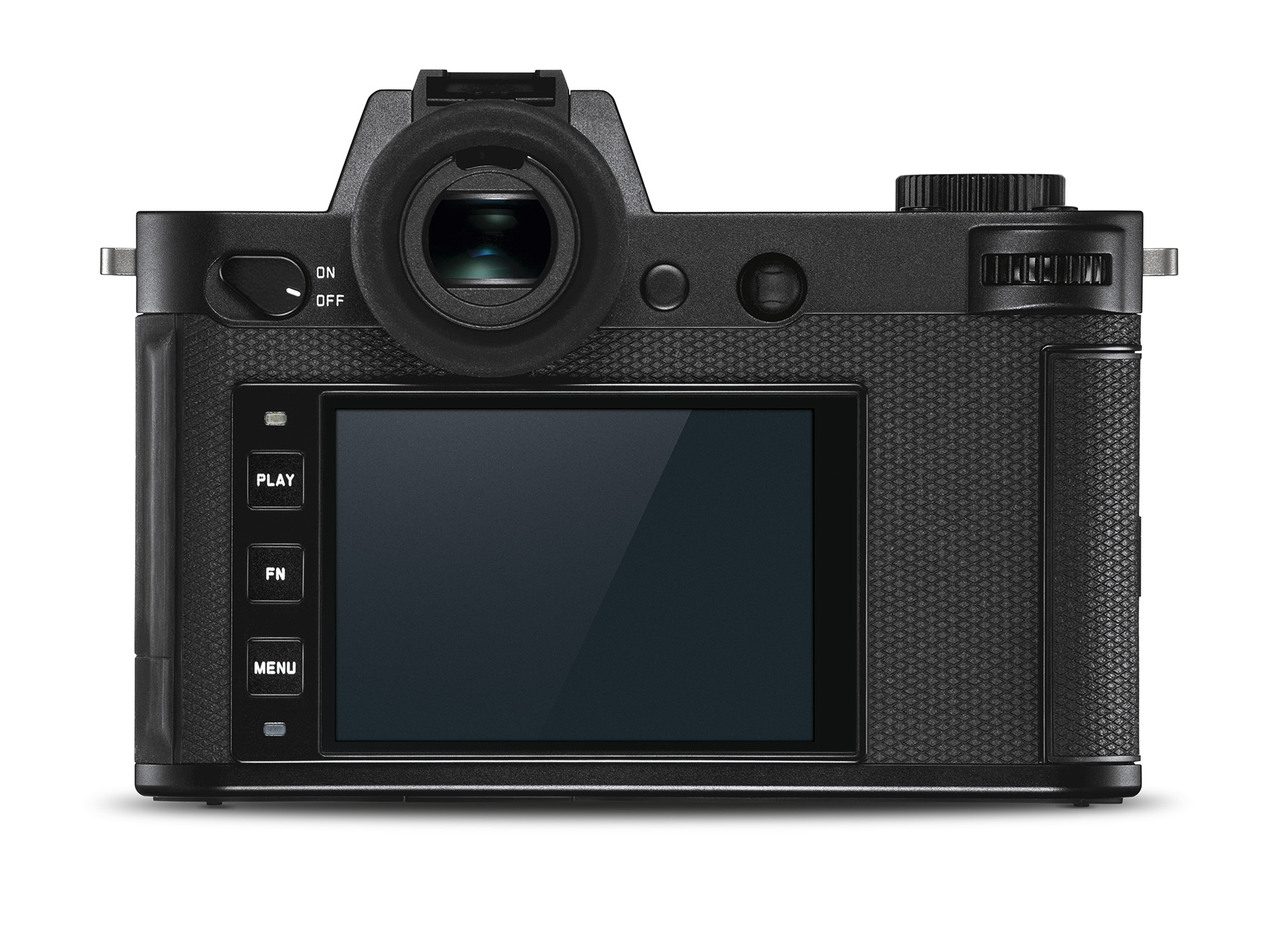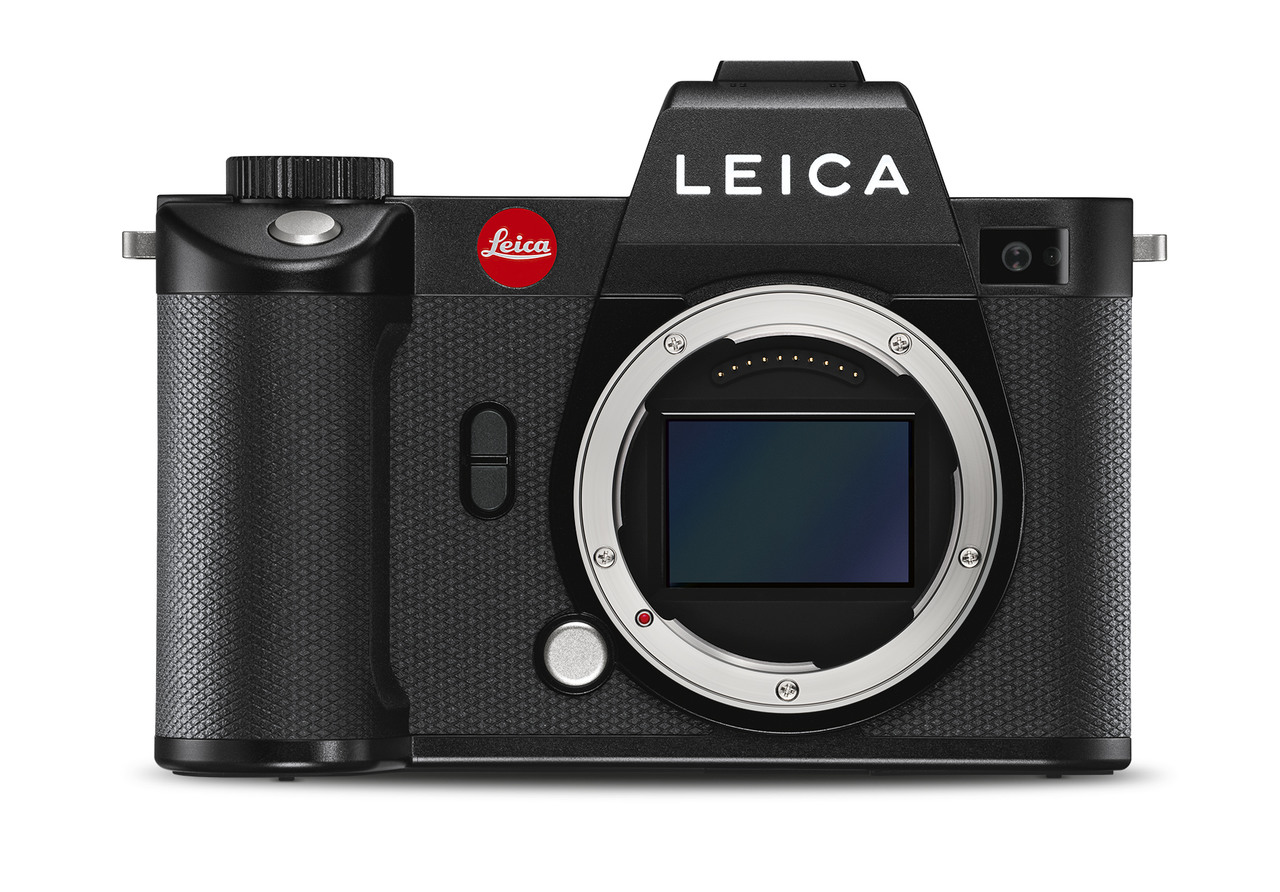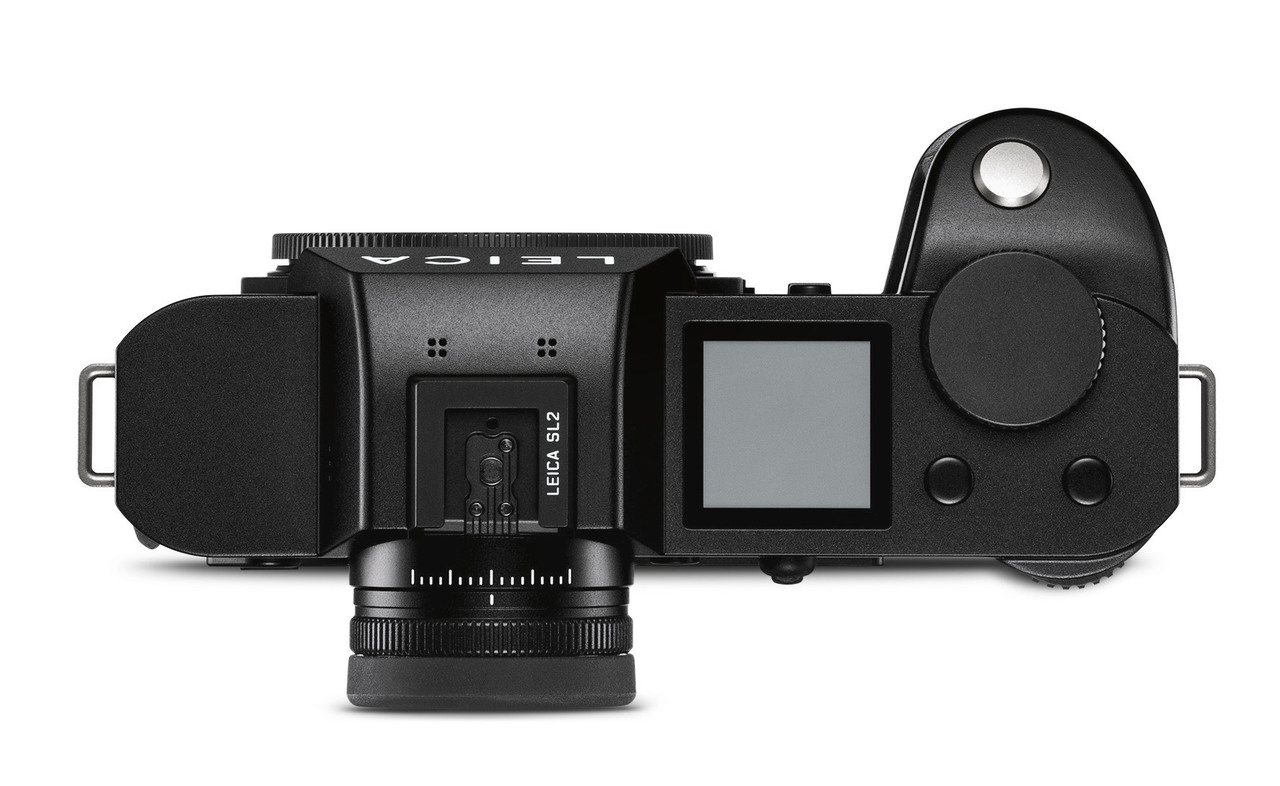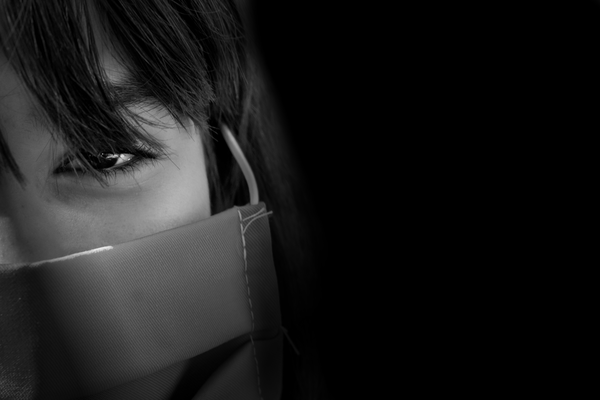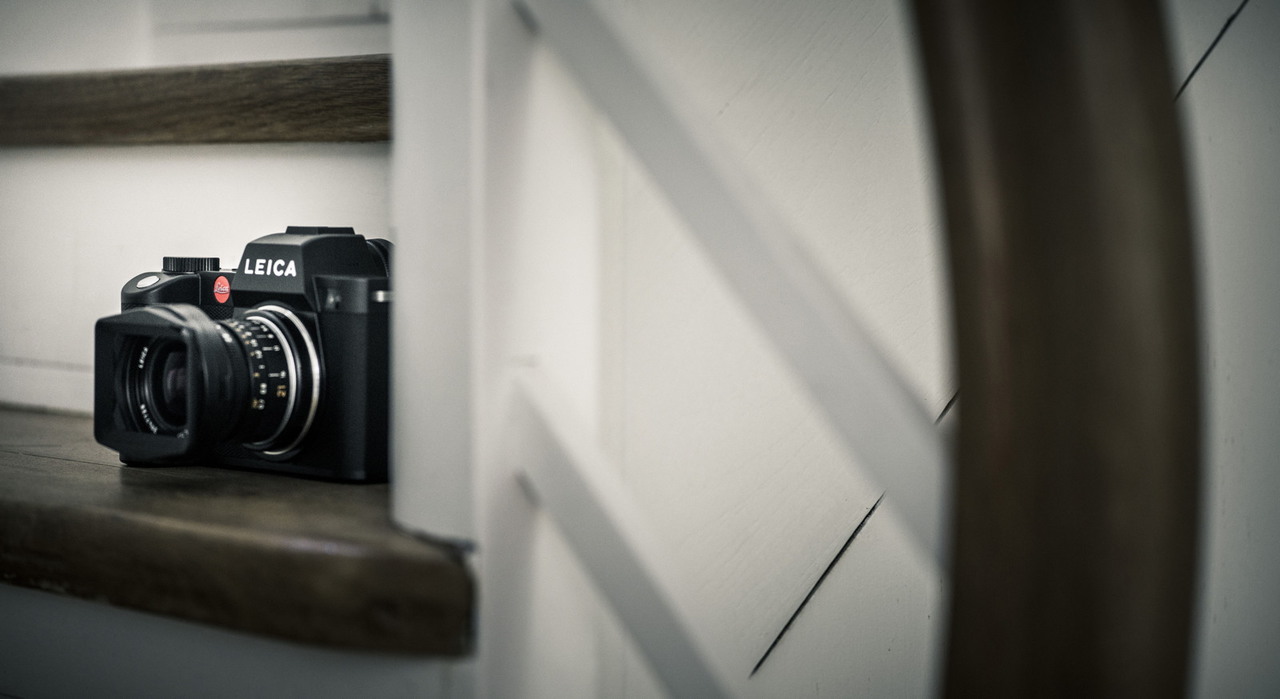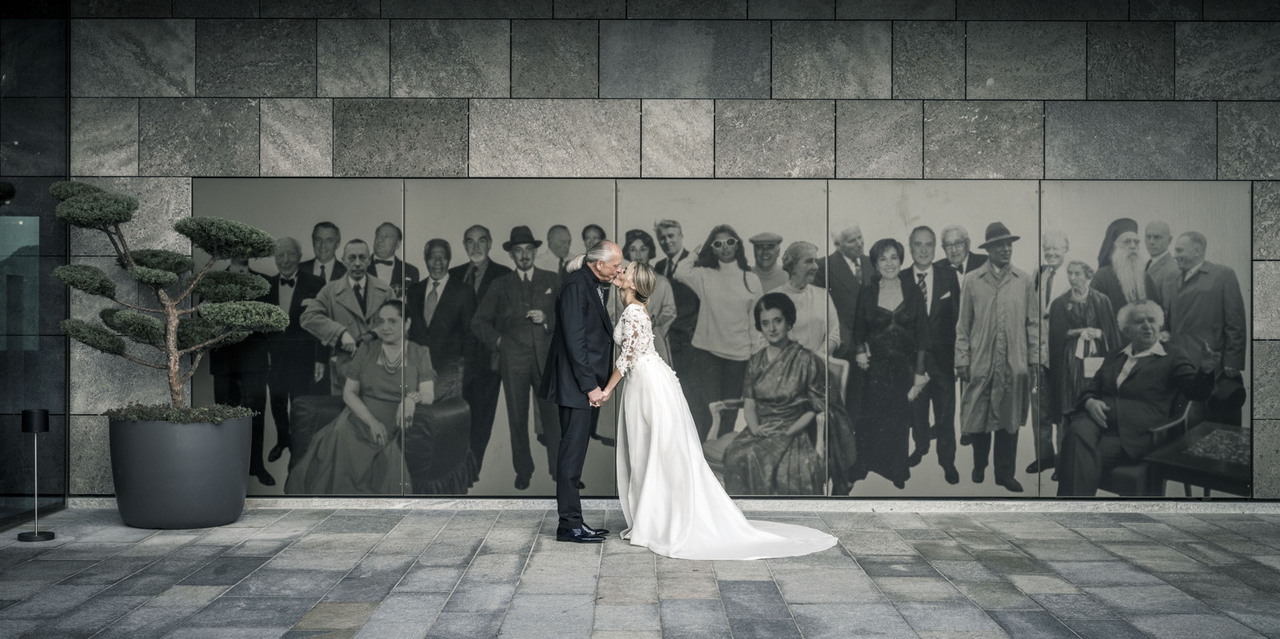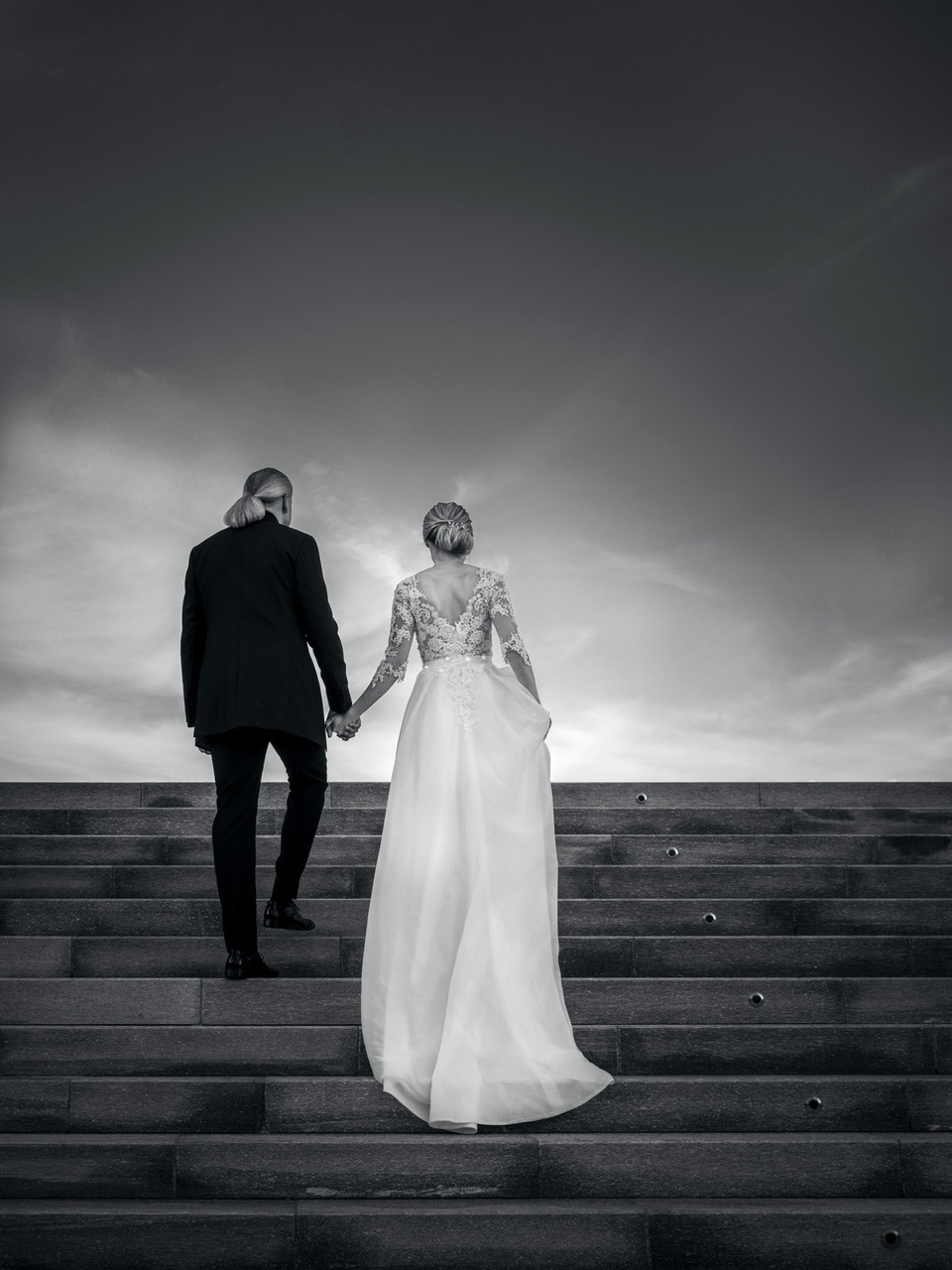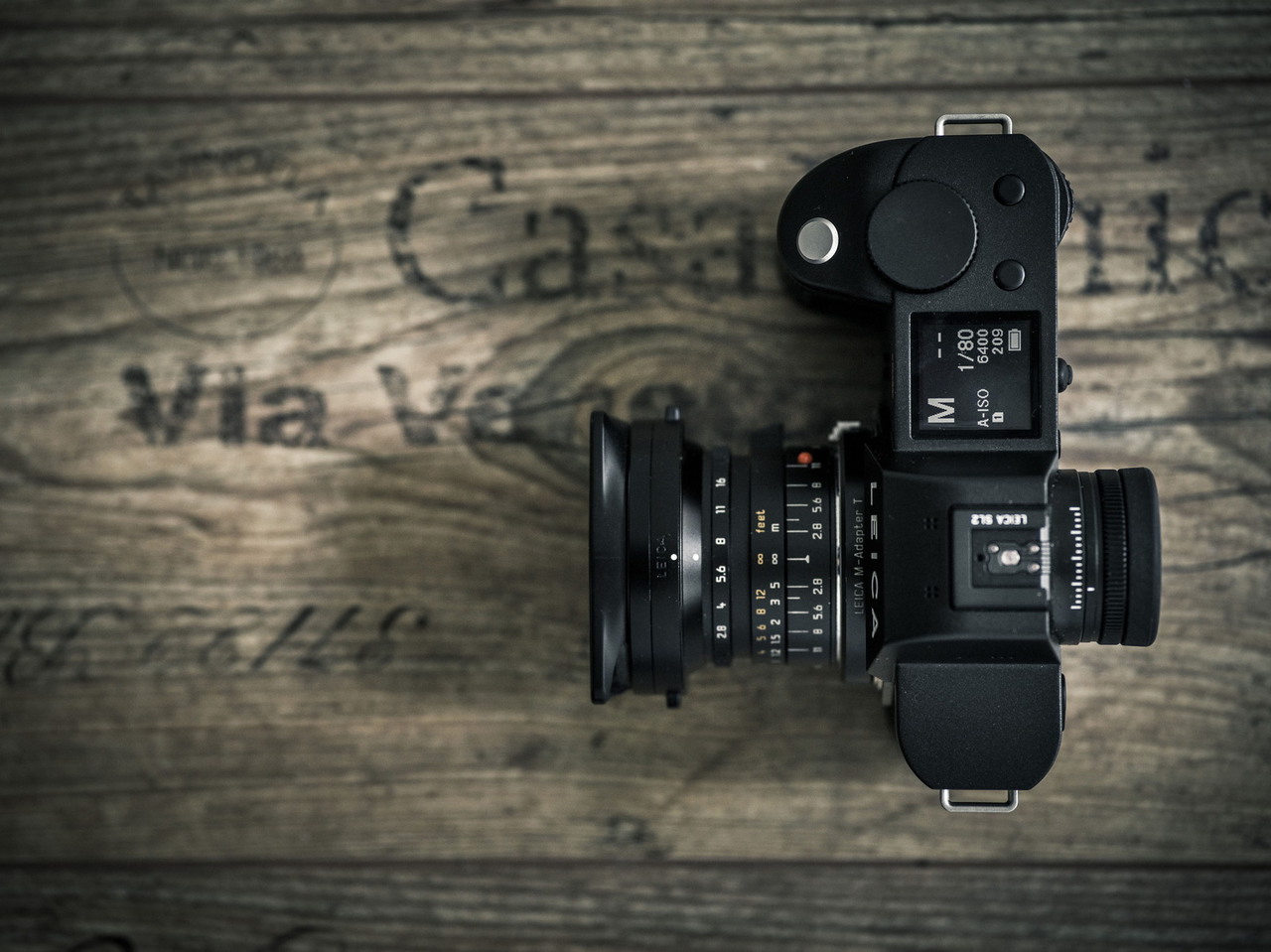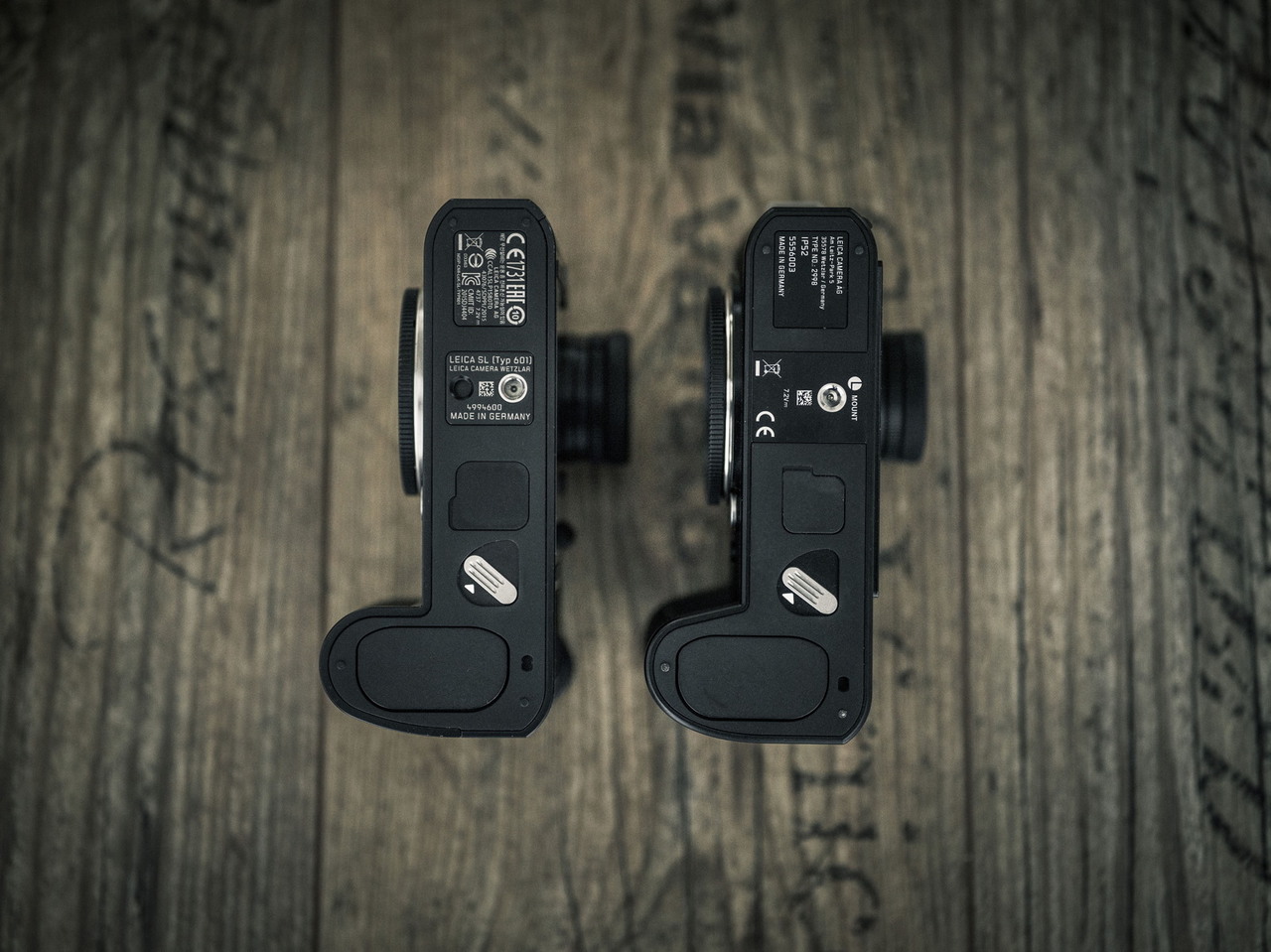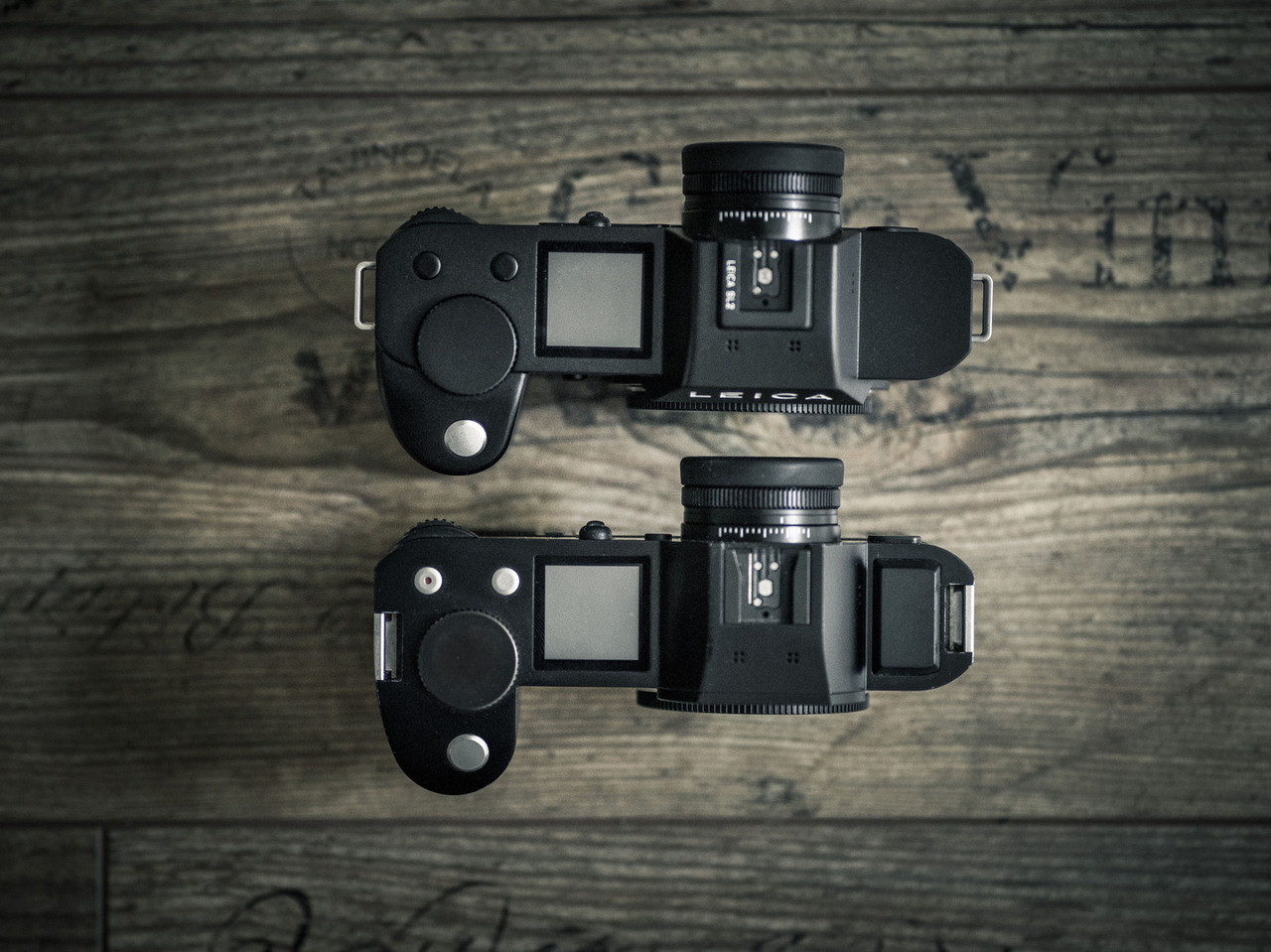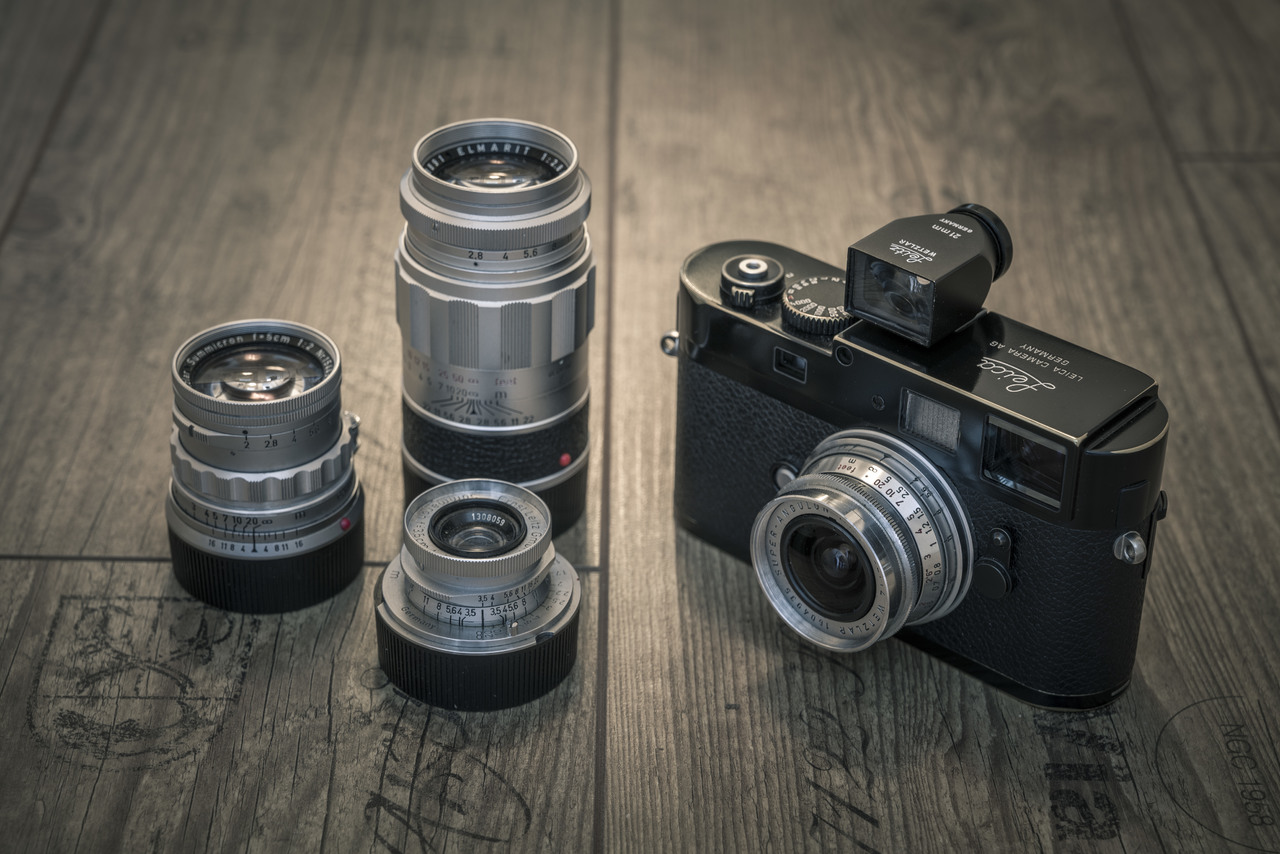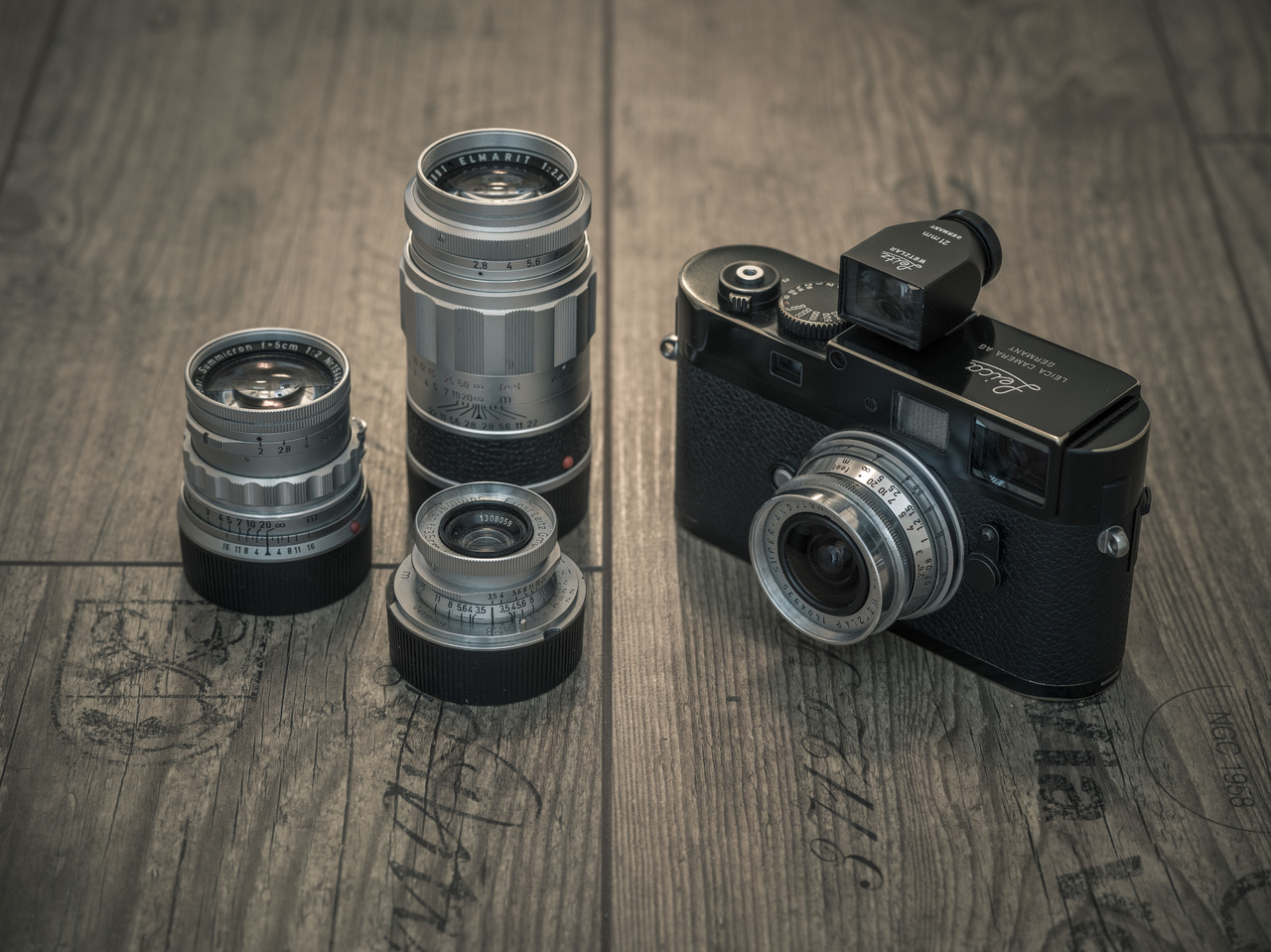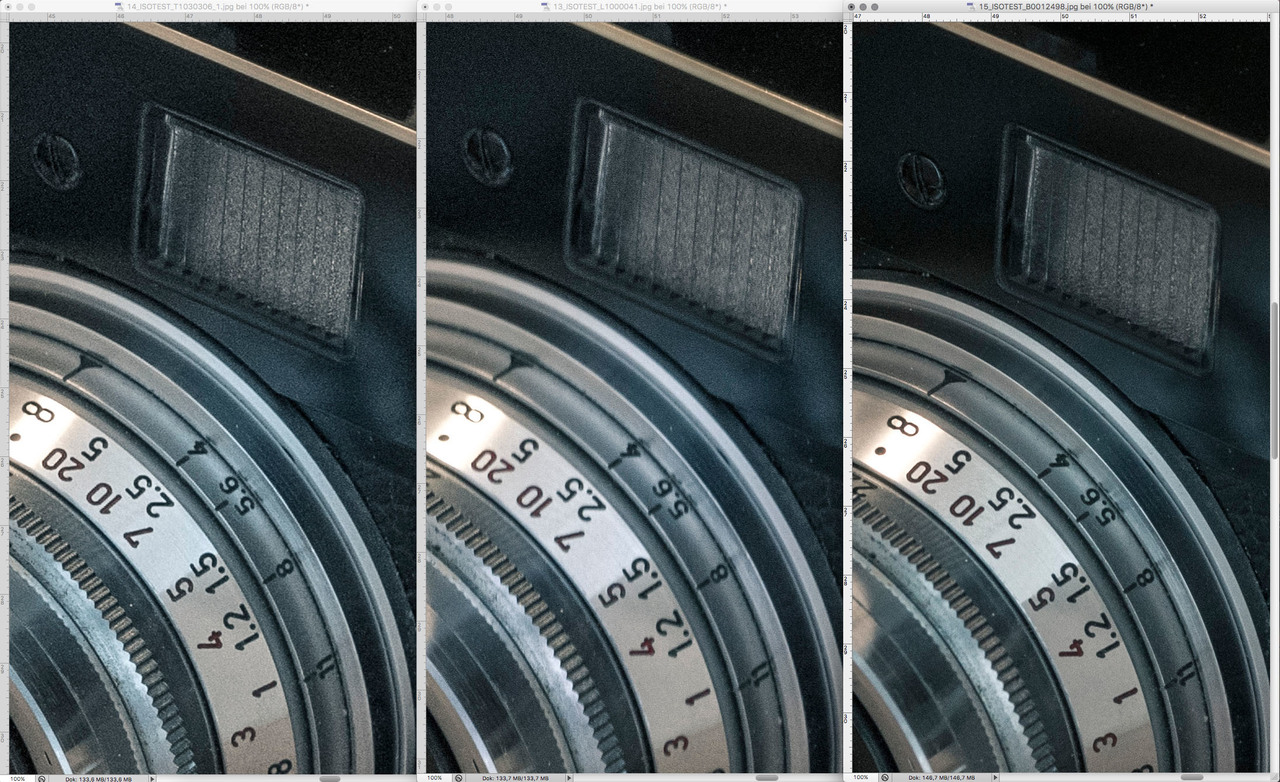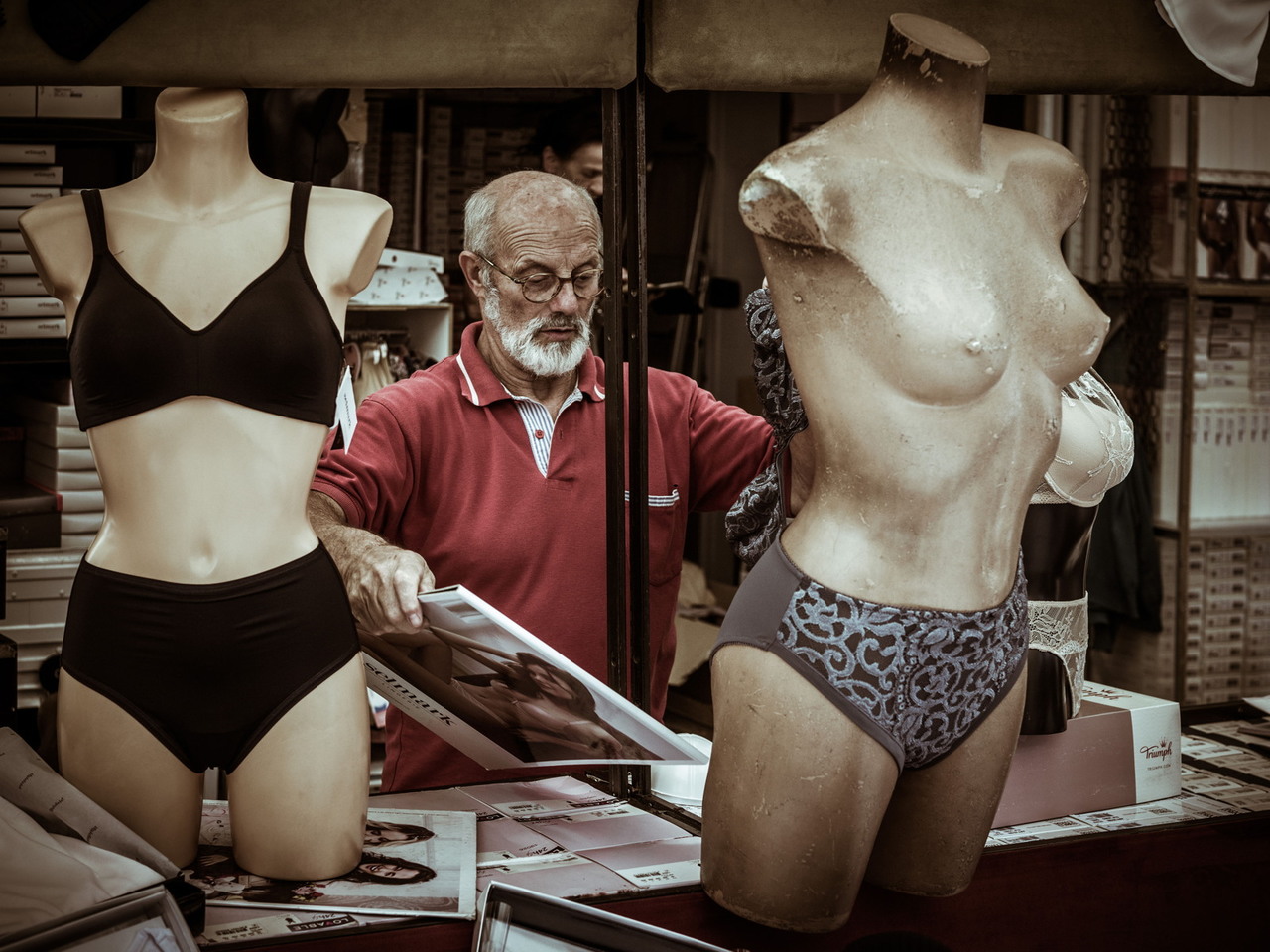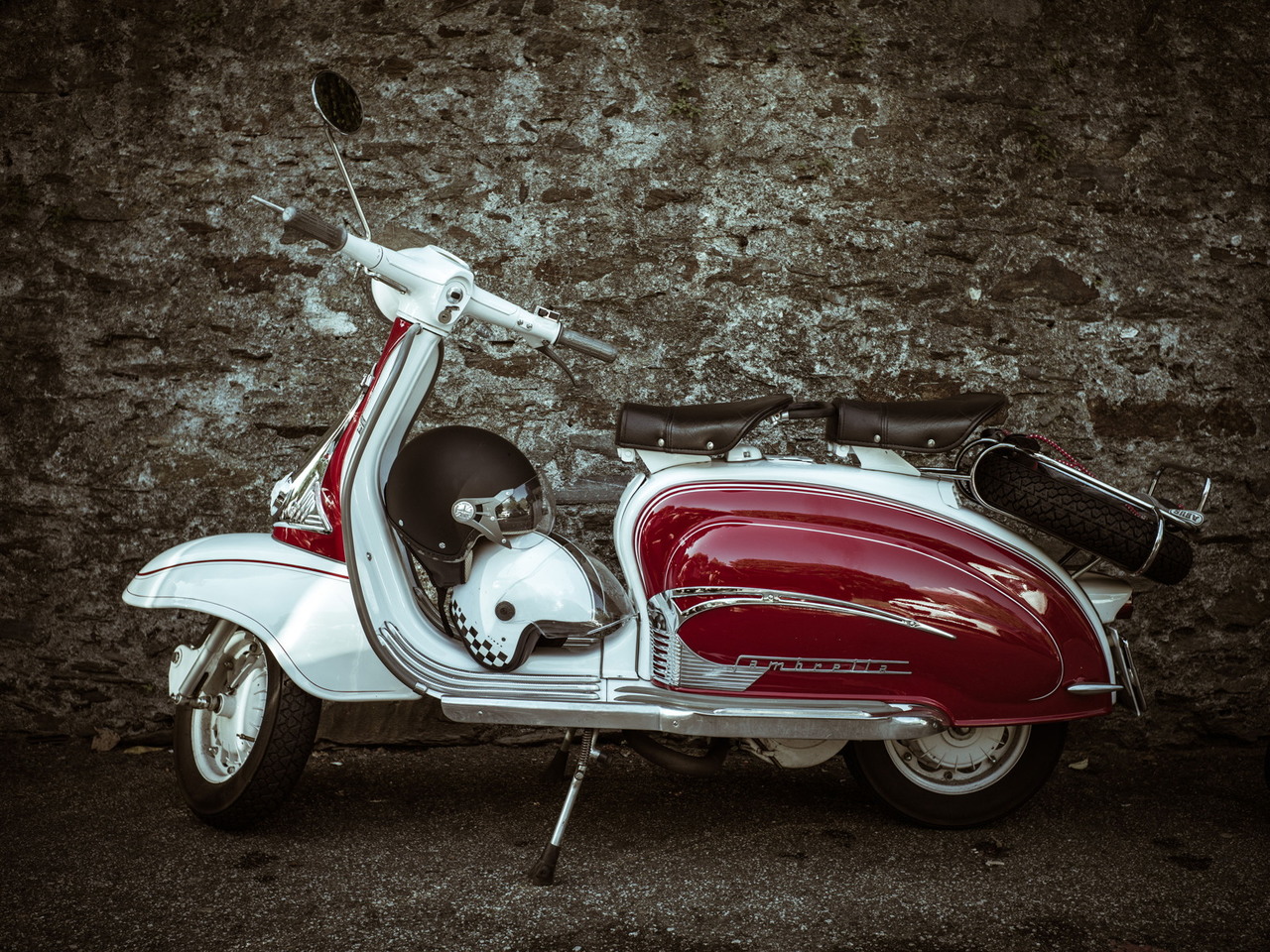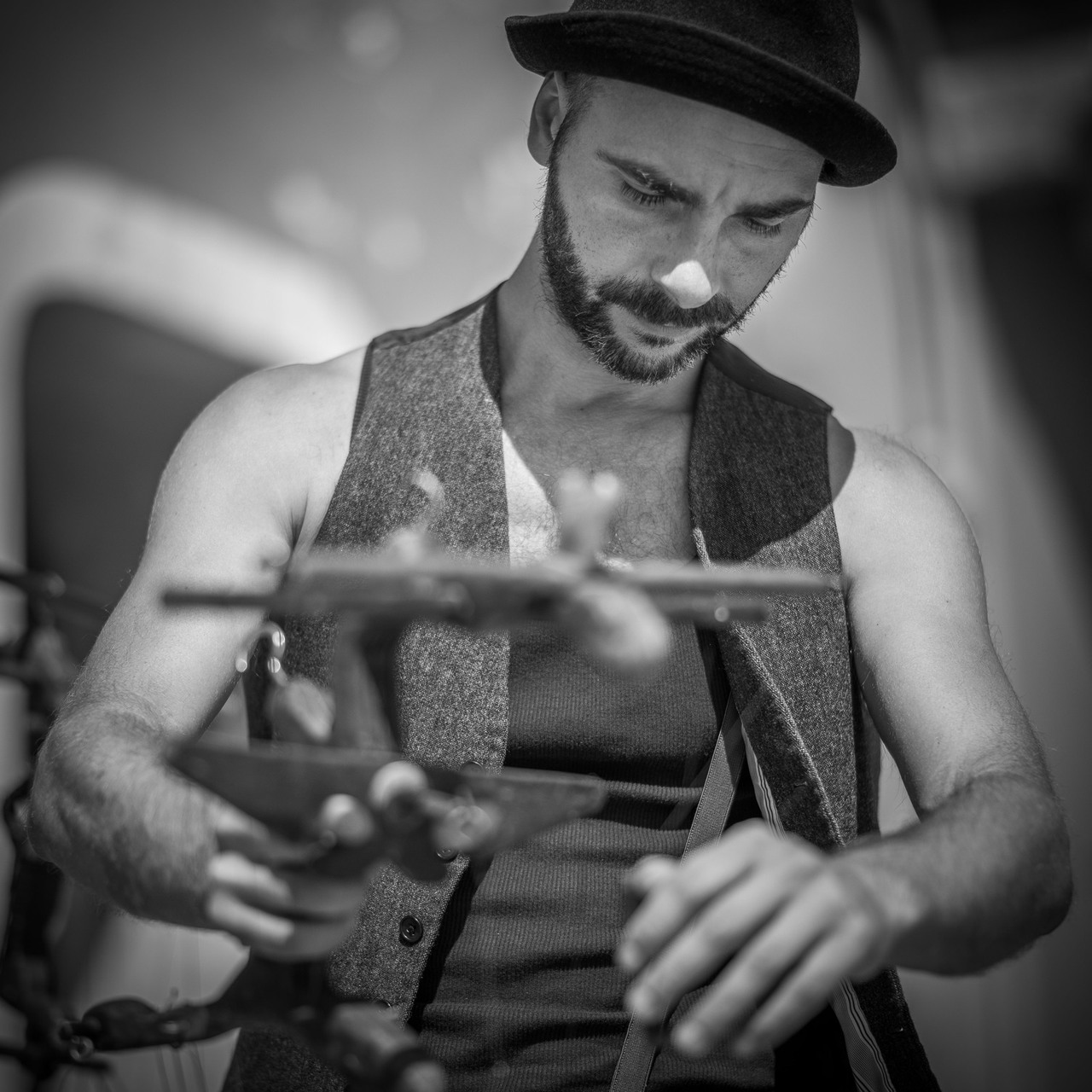Search the Community
Showing results for tags 'leica sl2'.
-

leica sl2 Leica SL2 image thread, please post your images here.
jaapv posted a topic in Leica SL System
Just anticipating This thread is meant to display images from the SL2. -
829 / 5.000 Resultados de traducción Resultado de traducción Susana Bejaoui is a dancer of Spanish Dance which means flamenco and Escuela Bolera (the classical spanish dance) among other things. This is our first session. In Cádiz, on Wednesday of Holy Week 2024, escaping the rain with which the day began but did not keep us hidden. We went with her red bata de cola with white dots to Plaza de la Merced, the old food market in the Pópulo neighborhood that has now been remodeled into a flamenco center. While we danced around the nave, inside, a band seemed to be rehearsing for the afternoon processions. We climbed the stairs of the square and Susana started playing with the railing, I asked her to dance to what we were listening to, I recorded three videos in which, with an horrible sound, the music could be heard inside the old market. This is one of the photos.
- 3 replies
-
- 8
-

-
- flamenco
- dance phootography
-
(and 6 more)
Tagged with:
-
21mm APO in Rainny Night This is a harsh test for the all weather capability of my SL2 and SL 21mm f/2 APO. It was a rainny night at Shibuya, Tokyo. When this red modifed Mazda RX-7 sports car passing me, I picked up my camera right away and shoot in AF mode. The lens did hunt a bit in dark+rain but eventually locked her target, I missed the moment which I wanted the car on the crossing, anyway. A subject can't stand out without a suitable background. Japan streets and cars are absolutely clean, sign board light is bright, the reflection from the wet asphalt road looks gorgeous to my eyes. I generally won't shoot streets under the rain in other places, but Japan is an exception. This is my very first day shooting with my SL 21mm APO on SL2 , the prictures are sharp centre to corner, AF is reliable but not snappy in dark. The picture was taken with f/2, 1/60, ISO320, colour graded in ACR. And this image has been cropped to just 3.4MP from the original 47MP output. THIS LENS CHANGE MY PREFERNCE. If you need the depth of field anyway, why bother to carry a heavy zoom or second lens anymore, if the photos are for sharing here and IG. Thanks to the high pixel sensor and the unbeatable 21mm APO, I believe this could be my ultimate answer.
-
Been waiting for the SL3 and now need to choose the best SL body for me and my needs. I have the original SL and the 24-90 but much prefer shooting with M lenses (I use Zeiss, 28, 35, 50). My photography is mainly street, family, travel. Reasons to upgrade (in no particular order): IBIS (key driver for me), improved grip, rounder design, better user interface (and quick menu), improved EVF. I normally default to buying the latest and greatest (SL3) but I don’t need better AF and virtually never use video. Am undecided about sensor size (24MP has been fine so far, not crying out for 60) and would like improved ISO. So guess that is pointing me towards the SL2 or 2-S. Anyone else in similar situation? Guess used 2 and 2-S prices will drop soon. Likely to be any U.K. deals on new copies? Thanks.
-
Can the SL2 mounted with the SL2.0 / 35 ASPH fit into a Billingham Hadley Small Pro 2020?
-
Dear all 9 months after my SL2-s developed an EVF problem (that was replaced by the factory within warranty in 2/12) it has now developed a jammed shutter. This makes me wonder about quality control. Has anyone had similar issues with their SL601 / SL2 / SL2-s? Any input is being appreciated.
- 11 replies
-
I have been noticing that Leica SL2 blurs the EVF when I half press the shutter. Is this happening with everyone and is there any news on if they will address this issue in the upcoming firmware update? Thanks a lot!
-
Leica hat neue Firmware Updates mit v.5.0 für die Leica SL2 und mit v.4.0 für die Leica SL2-S veröffentlicht. Hier sind die Links zu dem Firmware Downloads und alle Verbesserungen im Überblick. Download » Leica SL2 v.5.0 Download » Leica SL2-S v.4.0 Download Verbesserungen SL2 / SL2-S FOTO NEU: Perspektivkorrektur VIDEO NEU: Wählbare Schrittweite für die direkte Einstellung des ISO-Wertes mittels Einstellrädern (1EV, 1⁄2EV, 1⁄3EV oder 1⁄6EV) FOTO/VIDEO NEU: Objektivprofilmenü um zusätzliche Brennweiteneinstellungen erweitert NEU: Auswahlliste für die Belegung der FN-Tasten jetzt anpassbar und erweitert ERWEITERT: Unterstützte Objektive VERBESSERT: In einigen Fällen fehlen die Objektiv-Exif-Informationen bei Objektivadaptern von Drittanbietern KORRIGIERT: In seltenen Fällen waren nach einem Trennen der Verbindung die Funktionen Pairing und Löschen im Menü Leica FOTOS nicht verfügbar KORRIGIERT: Kleinere Probleme mit der neu eingeführten Funktion AF-Messfeld zentrieren wurden behoben. Die Fokuspositionen werden nun korrekt gespeichert.
- 14 replies
-
- 2
-

-
- leica sl2
- leica sl2s
-
(and 2 more)
Tagged with:
-
Leica hat die neue Firmware V 3.0 für die Leica SL2 vorgestellt. Die Verbesserungen im Detail: Neuer Autofokus-Algorithmus Verbesserte Augen/Gesicht/Kopf/Körper-Erkennung und Fokusverfolgung. HEVC Video Kompression Interne 4K-Aufzeichnung mit 10 Bit bei 60p/50p mit h.265-Codec. Long-GOP Die Aufzeichnung für 10-Bit-Codecs mit 150 - 200 MB/s bietet die gleiche Bildqualität wie All-Intra, aber weniger als die Hälfte der Datengröße. Segmentiertes Video Die Videoaufzeichnung wird in 1-Minuten-Segmente aufgeteilt, um Datenverlust zu vermeiden. Individuelle Viewing LUTs Upload-Funktion für individuelle Look-Up-Tabellen. Erweiterte Live-View-Funktion Bessere Steuerung der Bildkomposition bei schwachem Licht für das Live View-Bild. Bild-Überlagerung Ermöglicht die Ausrichtung der Kameraposition auf der Grundlage eines zuvor aufgenommenen Bildes, das im EVF oder auf dem LCD-Bildschirm transparent angezeigt wird. Automatischer Follow Focus Definition von drei Fokuspunkten für die automatische Fokusverlagerung während der Videoaufnahme. Die FN-Tasten können nun verwendet werden. Schärfeeinstellung in Video und Live-View zusätzlich zu vordefinierter Sequenz. Wave form monitor Professionelle Belichtungsbewertung des Videosignals. Color Bar Referenz für korrekte Farbkorrektur und Tonsteuerung in der Postproduktion. Aufnahmeanzeige Rahmen (Tally Mode) Kamera zeigt roten Rahmen im Display bei Videoaufnahme. Belichtungsmessung mit Lichterpriorität Messmethode mit der Priorität für den Erhalt der Lichter. Dynamikbereich Steuerung Helligkeit in Schattenbereichen erhöhen. Hell-Dunkel-Steuerung Präzise Steuerung der Kontrasteinstellung. » Zur Downloadseite Leica SL2 Firmware 3.0
-
Am 6. und 7. Oktober 2021 finden in einer Zusammenarbeit zwischen der Leica Akademie und der Leica Boutique Foto Walter in Tübingen die "Erlebnistage Leica SL-System" statt. Olaf Wolf, der Experte aus dem Hause Leica und das bekannte Foto-Walter-Team werden mit Rat, Tat und viel SL-/SL2-Equipment vor Ort zugegen sein. Zudem kam aus der Ferne die Anregung, sich mal wieder in Tübingen zu treffen. In kleiner Gruppe haben wir deshalb beschlossen, beides miteinander zu verbinden. Wir treffen uns am Mittwoch, den 6. Oktober 2021 um 17:00 Uhr bei Foto Walter im Laden. Anschließend gehen wir "beim Chinesen" essen. Dafür haben wir – einer alten Tradition folgend – das China Restaurant San Bao ausgesucht. Wie immer gilt: Neue Gesichter sind ebenso willkommen wie die üblichen Verdächtigen. (Wer beim Essen dabei sein möchte: Bitte zwecks Reservierungsplanung rechtzeitig Bescheid geben und bitte auch auf die aktuell gültigen Corona Regeln Gastronomie sowie einen entsprechenden Nachweis achten.) Und noch was: Foto Walter ist zur Zeit nur sehr schwer erreichbar, da direkt am Geschäft die Steinlachbrücke neu gebaut wird und daher nicht befahrbar ist. Wer drei Minuten laufen kann, parkt im Parkhaus Metropol und läuft dann bis zur Steinlachbrücke. Die Steinlach lässt sich an dieser Stelle jedoch nur über die neue, blaue, beheizbare Radbrücke überqueren. Da nach der Radbrücke zeitweise auch der Gehweg von der Wöhrdstraße zum Fotogeschäft gesperrt ist, führt der Weg nun entweder durch den Drogeriemarkt Müller oder die Passage an der Apotheke an der Friedrichstraße in die Friedrichstraße und dann direkt zum Laden. Alternativ über den Europaplatz am Hauptbahnhof vorbeifahren und dann Richtung Parkhaus. Wichtig ist, dass man vor (!!!) der Neckarbrücke, zwischen Restaurant Istanbul und Touristbüro (= Bürger- und Verkehrsverein Tübingen e. V. Tourist & Ticket-Center) rechts in die Wöhrdstraße zum Parkhaus am Neckar abbiegt (sonst isch over und der Weg durch Tübingens oft verstopftes Einbahnstraßensystem weit). Wenn man am Parkhaus ankommt, gestaltet sich der Weg wie oben beschrieben. (Vom Parkhaus aus führt auch eine Überführung direkt in den bereits erwähnten Drogeriemarkt Müller.) ... Bei zu viel Verwirrung einfach mich mobil anrufen. Nochmal für alle, die inzwischen vergessen haben, warum sie diesen Text lesen: Wir treffen uns am Mittwoch, den 6. Oktober um 17:00 Uhr beim Foto Walter in der Friedrichstraße 15 in Tübingen (Foto Walter bei Google Maps)
- 2 replies
-
- 2
-

-
- tübingen
- fotowalter
-
(and 3 more)
Tagged with:
-
My SL2 is locked up - indicates ERROR in top display, no viewfinder / EVF / LCD display, but I can see aperture changing in top display if I change the light in front of the lens. No problems for four months after purchase brand new from B&H, then I use a Metabones-adapted Macro-Elmar-R 60mm f/2.8 for the first time, and after a day of successful photography the camera is locked up this evening. Tried removing the battery for 10 seconds for reset - still locked up with ERROR in top display on power up. Tried different lenses - Sigma L-mount 85/1.4 DG DN Art that worked fine for four months, Leica M lenses on M adapter L that also worked fine for four months. Tried a couple different batteries. Still nothing. **Any insights or fixes?** Combination of camera button presses to reset camera? Thanks.-
-
Has anyone found a source for a Leica SL2 L-plate with Spider holster pin? I've checked RRS and ProMediaGear.com without success. Maybe I'm not searching well enough. I'd appreciate anyone else's discoveries. Because of ongoing neck and back trouble getting worse lately, I can no longer wear cameras on straps around my neck, so I need to clip them at my waist with the Spider holster system, which I already have. Thanks.
- 1 reply
-
- spider holster
- leica sl2
-
(and 1 more)
Tagged with:
-
Has anyone found a source for a Leica SL2 L-plate with Spider holster pin? I've checked RRS and ProMediaGear.com without success. Maybe I'm not searching well enough. I'd appreciate anyone else's discoveries. Because of ongoing neck and back trouble getting worse lately, I can no longer wear cameras on straps around my neck. I need to clip them at my waist with the Spider holster system, which I already have. Thanks.
- 4 replies
-
- spider holster
- leica sl2
-
(and 1 more)
Tagged with:
-
www.slack.co.uk
-
Hi all, I have recently noticed a pulsing flicker in the outer parts of frame (where you would normally see a vignette) with my SL2 when filming video, it is not moire, but more of a pulse of three flashes and have no idea what it is but makes the video unusable. Has anyone experienced this? I am filming @ 24fps, C4K, L-LOG and NON, 180 degree shutter, with a Leica M lens and adapter, no fluorescents, I tested with image stabilizing and non and see it both situations. Including a test below (random shots) and any help would be greatly appreciated! devastating to see this. SL2 FLICKER TEST - https://vimeo.com/520140179/b4da174625 Many thanks // Ben Jacks
-
I’m using an Atomos Ninja V 5” monitor driven by the SL2’s HDMI port. It displays the viewfinder image just fine, but none of the AF tracking and exposure data shown in the viewfinder. This gives me a very viewable display at low camera angles - the eyepiece no longer gets in the way, and I can actually see what I’m shooting. ** Is anyone else using an external monitor, and how do I get the AF tracking point and exposure info I see in the viewfinder to appear in the external monitor? Right now all I get is the viewfinder image. I have to place the AF tracking point in the middle of the viewfinder and put the subject there when I’m using the external monitor without knowing if I’m AF tracking or not. Thanks..
- 1 reply
-
- hdmi monitor
- hdmi
- (and 7 more)
-
I have an opportunity to buy new equipment in the next few weeks and I’m still debating about medium format S007 or full 35 sl2. Recently I came across a non Leica product the fuji gfx 100, to get things more confusing. I have received estimate costs for the Sl2 for new and for used S 007 . I then received a proposal for a gfx that is very tempting as it is a 100 mp.sensor, maybe very good for my big size prints. I am a commercial advertising photographer and I’ve used canon, Hasselblads all my career after abandoning LF film cameras. I am aiming to get bigger prints for my fine art work and best quality lenses. At Leica store in New York they let me try both Sl2 and S007 for a week each. At the moment I have to take a decision and buy the equipment. Could anyone give an advice? Also I’ve never owned a digital view finder camera. I shoot studio portraits, mainly lifestyle and occasionally autos. Thank you all, any comment would be precious and apreciated .
- 29 replies
-
- leica s007
- leica sl2
-
(and 1 more)
Tagged with:
-
OK, I give up. The SL2 camera does NOT want me to set date and time. I can change their format, but I can't set actual values from the camera. I've switched off the sync via Smartphone option. I can select individual year, month, and date. But no control I try (no dials or buttons) does anything to change their values. Any ideas what is going on here??
-
Does anyone with an SL2 have experience with Sony’s latest A7r4 or A9 series (1 or 2)? I mainly shoot my family and my running toddlers and other fam events. My Sony A7r4 grabs faces and holds focus without a thought and about 100% of the time, will the SL2 be competitive there? I mainly shoot an m10-p, but when autofocus is needed I grab the Sony. I’m hoping to switch to the SL2 with an early preorder already made, but I’m only hesitant in its AF abilities. Coming from a new Sony, I’m hoping it will be comparable. My Q2 had solid AF abilities and great hit rate, if the SL2 is a step past that, it is indeed then competitive.
-
Testbericht von Thomas A. Berger | www.tab-fotografie.de Update 14. November 2019: English Version here Erste Erfahrungen mit einem neuen Meilenstein – Leica SL2 Die Überschrift meines kleinen Reviews, in der ich mich dem Wortlaut von Leica zur Ankündigung der neuen SL2 bediene, ist gleich zu Anfang eine gewisse Begeisterung zu erkennen, die ich für den jüngsten Spross aus dem Haus mit dem roten Punkt empfinde – aber der Reihe nach. Zunächst ein Rückblick zu meinem Einstieg ins SL-Leben: Dass Euphorie und sofortige Begeisterung nicht von Anfang an für die SL standen, zeigt mein steiniger Weg zur ersten Leica SL. Von der Kamera war ich nämlich bei ihrem Erscheinen 2015 zunächst überhaupt nicht sonderlich angetan und ich muss gestehen, dass ich mit dieser Kamera zunächst nicht viel anfangen konnte. Verglichen mit meinen geliebten M-Kameras zu groß, zu schwer und angesichts der schon längst etablierten, spiegellosen Konkurrenz von Sony & Co. mit deren hervorragenden Kameras auch noch Leica-typisch viel zu teuer – das waren meine ersten Reaktionen damals und somit war die SL zunächst mal abgehakt. Zu dieser Zeit spielte Leica mit dem M-System bei mir immer noch die Nebenrolle für die Street- und Reisefotografie. Für die Hauptarbeit in meinem Job als Werbefotograf innerhalb meiner Agentur waren neben dem digitalen Mittelformat im Bereich Vollformat ausschließlich die DSLR-Nikons zuständig. Dann kam die Wende: mit Erscheinen der Hasselblad X1D, von der ich als jahrelanger Hasselblad-V-Fotograf gleich begeistert war, wuchs bei der Arbeit mit dieser spiegellosen Mittelformatkamera die Erkenntnis, dass meine immer größer werdenden Probleme der Scharfstellung mit digitalen Spiegelreflexkameras plötzlich wie weggeblasen waren. Keine Probleme mehr mit Unschärfe bei hektischen Terminen, weil die Schärfe einfach nicht auf dem Punkt sitzt und man Blut und Wasser schwitzt, um die Schärfe auch da hin zu bekommen, wo man sie braucht. Das war die Initialzündung für die Leica SL als mögliches Arbeitstier – und mit der ersten Live-Begegnung auch prompt die Erkenntnis: eine tolle Kamera, die den hohen Qualitätsanspruch von Leica im Bereich der spiegellosen Kameras sehr gut repräsentiert und mit der ich dann auch von Anfang an sehr gut zurecht kam. Seit diesem Zeitpunkt ist eine über 30 Jahre dauernde Arbeit mit Nikon passé und ich bin im Vollformat mit der SL und der M nun gänzlich bei Leica gelandet. Vor ein paar Monaten dann die Nachricht von unseren LUF-Admins Andreas und Leon, ob ich Interesse hätte, als Feld-Tester für die Software der kommenden SL2 tätig zu werden – was für eine Frage, die ich natürlich auch als rein rhetorisch gewertet habe! 😉 Vorausschicken möchte ich, dass mein Review vor dem Hintergrund als reiner Praxisanwender geschrieben ist, der seine Kamera in seiner ganz persönlichen Art beruflich und privat einsetzt. Ich bin kein professioneller Tester, der die Kamera mittels neutral aufgearbeiteter Testfotos auf dem Prüfstand beurteilt. Und obwohl ich natürlich versuchen werde, nüchtern und sachlich zu urteilen, sind meine Erkenntnisse immer verhältnismäßig subjektiv und sehr auf meine persönliche Arbeitsweise bezogen. Sie sind nicht sehr techniklastik, die Bildergebnisse werden von mir in der RAW-Verarbeitung mit dem PS-Konverter grundsätzlich in meinem Stil entwickelt und ich werde auch nicht sehr ins Detail gehen, was die Funktionen und technischen Möglichkeiten des neuen Gehäuses anbelangen. Außerdem bin ich üblicherweise reiner Fotograf und mein Review bezieht sich deshalb auch ausschließlich auf die Fotografie mit der SL – Aussagen über die videotechnischen Möglichkeiten mache ich keine. Ergonomie, Handling und Bedienung Wenn man als eingefleischter SL-Anwender die SL2 nach dem Auspacken zum ersten Mal in die Hand nimmt, kommt sofort ein Staunen auf: Obwohl die Kamera auf den ersten Blick ihrer Vorgängerin zunächst sehr sehr ähnlich sieht, fühlt sie sich extrem anders an! Es wird sofort klar, dass die beim zweiten Hinsehen leicht veränderten Designelemente und Oberflächen zu einem deutlich veränderten Griffgefühl geführt haben. Die SL2 ist ein perfektes Beispiel dafür, wie nur wenige Millimeter Veränderung von Gehäuserundungen und Formen eine große Veränderung bzw. Verbesserung des Handlings bewirken können. Es wurde nach der sinngemäßen Aussage von Andreas Kaufmann, einen neue SL würde nicht mehr so grob geschnitzt sein, sicherlich viel vom neuen Design erwartet und manch einer wird vielleicht sagen, dass er von der SL2 etwas mehr Veränderung erwartet hätte – zumal die SL ja bezüglich ihres Designs von Anfang an recht umstritten war. Ich kann aber berichten, dass die zunächst nur marginal wirkenden Veränderungen in der Handhabung eine deutliche Verbesserung gebracht haben. Der jetzt komplett umlaufende Kunststoffbezug, die leicht abgerundeten Kanten des mit Strukturlack versehenen Gehäuses und vor allem der in der Form leicht veränderte und mit einer Einbuchtung auf der Innenseite versehene Handgriff verhelfen der Kamera zu deutlich mehr Grip – die SL2 hält sich mit meinen etwa mittelgroßen Männerhänden einfach hervorragend! Das Gewicht ist praktisch gleich geblieben – obwohl man auf Grund des besseren Handlings sofort meint, die Kamera ist leichter! Auf meiner zugegeben ungenauen Haushaltswaage ist sogar eine im Vergleich zur SL ganz minimale Gewichtserhöhung zu verzeichnen (siehe Fotos), obwohl ich nach dem ersten Anfassen tatsächlich geschworen hätte, die SL2 ist leichter als die SL. Hier kann man deutlich sehen, was ein neues Griffgefühl bewirken kann. Die Maße der Kamera sind praktisch ebenfalls gleich geblieben, das Gehäuse hat auch in der Dicke nicht zugelegt. Das ist insofern erstaunlich, weil die SL2 jetzt mit ihrem beweglich gelagerten Sensor über IBIS verfügt – dazu später mehr. Was sofort ins Auge fällt, ist das veränderte Tastendesign auf der Kamerarückseite. Hier stand mit ihren drei wieder beschrifteten Drucktasten eindeutig die Leica M10 Modell, was ich persönlich super finde. Wer wie ich parallel mit der M10 arbeitet, empfindet diese Abkehr von dem unbeschrifteten 4-Tasten-Konzept der SL als echte Erleichterung. Ich habe mich im Laufe der Zeit bei der SL zwar dran gewöhnt, hatte aber immer wieder mal meine Schwierigkeiten mit der Tastenbelegung, wenn es hektisch wurde. Das neue Konzept kommt mir sehr entgegen. Joystick und Bedienräder sind hingegen in Bezug auf die SL gleich geblieben. Die jetzt nach außen abgesetzten und nicht mehr in den Gehäusebereich versenkten Chrom-Bügel für den Tragegurt empfinde ich zwar designmäßig als etwas weniger gelungen, aber dafür lässt sich nun ganz eindeutig der Tragegurt viel schneller und einfacher befestigen und wieder abnehmen. In der Praxis eine Verbesserung, auch wenn das glatte Design dadurch etwas gelitten hat. Bei der Menüführung ist die SL2 der M10 ebenfalls recht ähnlich – natürlich nur in den Bereichen, die mit der M10 auch korrespondieren. Hinzugekommen ist ein sogenanntes Schnellmenü in der Hauptoberfläche, das man selbst konfigurieren kann. Hier lassen sich auf einen Blick die wichtigsten und am häufigsten gebrauchten Funktionen ablesen und per Touchoberfäche sofort bedienen, ohne ins Listenmenü zu müssen. Eine große Veränderung gegenüber der SL betrifft das GPS. Die SL2 hat keine Antenne mehr für die Ortung und demzufolge auch kein internes GPS. Das ist zwar schöner fürs Design, weil nämlich der hässliche Plastik-Hubbel links, unter dem sich die Antenne befunden hatte, jetzt weg ist. Dafür gibt es GPS jetzt nur noch über die Verbindung mit dem Smartphone. Das werden sicherlich einige bedauern. Mir persönlich macht es nicht so viel aus, da ich auch hier kein ausgiebiger Anwender von getaggten Fotos bin. Trotzdem wird dies für so manchen vielleicht ein Wermutstropfen sein. Der Sensor Hier steckt sicherlich der Hauptfaktor der von Leica proklamierten SL2 als „Meilenstein“: ein völlig neuer Sensor mit 47 Megapixeln Auflösung – und der ist auch noch mit IBIS versehen! Vor allem die sogenannte InBodyImageStabilization, also der Anti-Wackeldackel in der Kamera mit Hilfe des beweglich gelagerten Sensors war ein sehnlichst erwartetes Feature, das Leica jetzt wahr gemacht hat. Für mich persönlich ist der IBIS mindestens genauso wichtig wie die Verdoppelung der Auflösung, wenn nicht sogar wichtiger. Denn die Gefahr unscharfer Fotos durch minimale Verwackelung steigt potentiell mit der Steigerung der Sensorauflösung. Völlig objektivunabhängig drauf zurückgreifen zu können ist eine tolle Sache. Und: es funktioniert auch! Ich bin einer, der sehr häufig M-Objektive an seine SL adaptiert und finde das einen wirklich großen Fortschritt, jetzt auch mit den vielen adaptierten manuellen Objektiven oder auch den neuen Fremdobjektiven aus dem L-Mount-Angebot der Partner ohne Objektiv-Stabi (wie z.B. mein neues 45er Sigma mit L-Mount) eine Bildstabilisierung zu haben – klasse! Und wie schon erwähnt hat es Leica sogar geschafft, den IBIS-Sensor in ein gleich schlankes Gehäuse zu stecken. Zur Bildqualität des neuen Sensors kann ich nur Gutes berichten. Entgegen meiner Befürchtung, die höhere Auflösung auf der gleichen Sensorfläche wie bei der SL führe zu einem stärkeren Rauschen im hohen ISO-Bereich, wird mit der SL2 widerlegt. Auch in den hohen ISO-Einstellungen zeigt der neue Sensor, was er kann: die Aufnahmen sind durchgehend nicht nur feiner, sondern auch rauschärmer als bei der Vorgängerin! Im Grunde ist das praktisch in jeder ISO-Einstellung zu sehen, optisch wirklich stärker relevant wird es ab ISO 400. Das ist wirklich bemerkenswert und widerlegt die häufige Meinung, eine größere Pixeldichte führe automatisch zu stärkerem Rauschen. Was sich aber auch bestätigt hat: die SL2 ersetzt für mich nicht das digitale Mittelformat. Sie kommt zwar sehr nahe an die Bildqualität der größeren Sensoren heran, aber wer das letzte Quäntchen Perfektion auch für die Kunden braucht, kommt trotzdem nicht an den größerformatigen spiegellosen von Hasselblad oder Fuji vorbei. Allerdings ist der Abstand mit der SL2 deutlich geringer geworden und ihr Niveau wird wohl in 90 Prozent der Fälle ausreichen. Ich habe zur Verdeutlichung einen kleinen Vergleich gemacht: nachfolgend eine Motivserie, die ich mit der Leica SL, der SL2 (jeweils mit dem 24-90er Vario) sowie mit der Hasselblad X1D und dem 90er fotografiert habe. Ich möchte betonen, dass es bei meinem Vergleich nur um das Rauschverhalten und die Dynamik geht, nicht um die Auflösung. Die Schärfelage ist teilweise in den Testshots nicht ganz exakt gleich, deshalb taugen meine Fotos nicht zur Analyse des Auflösungsvermögens sondern nur zum Vergleich des Rauschverhaltens. Ich habe außerdem für meine persönliche Einschätzung in der Praxis alle Aufnahmen bei der RAW-Verarbeitung und anschließenden Speicherung auf das gleiche Auflösungsniveau interpoliert, also insgesamt auf etwa 50 Megapixel, auch die Aufnahmen mit der 24MP-SL. So lässt sich in meiner fotografischen Realität besser vergleichen, was die Sensoren im High-ISO-Bereich leisten, wenn sie, wie es im Job häufige Praxis ist, für später benötigte Medien wie z.B. Großplakate oder Messetafeln auf die dafür benötigte Auflösung „aufgeblasen“ werden müssen. Insgesamt zeigt sich dabei folgendes Bild: Obwohl die Pixel der SL größer sind als die der SL2 und damit lichtstärker sein müssten, ist das Rauschen mit höher werdenden Empfindlichkeitseinstellungen bei der SL doch eklatant stärker. Der Qualitäts-Abstand zwischen den beiden Leicas ist dabei definitiv größer als der zwischen der SL2 und der Hasselblad. Natürlich haben die SL2 und X1D die gleiche Pixelauflösung und damit ist die Feinheit des Rauschens zunächst einmal die gleiche, was eine Erklärung ist. Trotzdem finde ich es erstaunlich, dass die SL2 trotz nur etwa 60% der Sensorfläche der X1D ihr Rauschen auch bei hohen ISOs so gut im Griff hat. Da hat Leica wirklich einen guten Job gemacht und schließt damit sensortechnologisch in die ganz hohe Liga auf. Die Praxis Um es mit einem Satz zu sagen: Die SL2 macht sehr viel Spaß! Ich war in der Zeit, als ich die Kamera bekommen hatte, mal wieder auf einer meiner kleinen Fotoreisen und hatte außerdem zufällig in diesem Zeitraum eine Hochzeit in der Schweiz zu fotografieren. Demzufolge sind meine Bildbeispiele auch nicht kommerzieller Natur sondern beinhalten Street-Motive sowie Szenen des Paar-Shootings meiner Hochzeiter. Am meisten begeistert hat mich bei der SL2 die Leichtigkeit und Schnelligkeit, mit der man fotografieren kann. Die Kamera ist aus meiner Sicht im Vergleich zur Vorgängerin nicht nur deutlich besser zu halten – wie oben beim Thema Ergonomie ja schon angesprochen – sondern lässt sich einfach insgesamt super schnell bedienen. Die Kamera ist leise, sehr agil und eignet sich deshalb auch hervorragend für die Streetfotografie, da sie mit entsprechend kompakten M-Objektiven trotz Spiegelreflex-Look recht unauffällig ist. Nur ein Punkt arbeitet hier entgegen und dieses Manko liegt im Design: der strahlend weiße Leica-Schriftzug auf der Vorderseite der Sucherkappe ist sogar noch einen Tick größer geworden als bei der SL und fällt einfach fürchterlich auf. Wie übrigens auch der viel zu große rote Leica-Punkt auf der Vorderseite, der auch noch zu nahe an der Gehäusekante sitzt. Als ursprünglich ausgebildeter Grafikdesigner und Typograf hätte ich mir hier mehr Feingefühl gewünscht, aber ich schweife ab 😉 ... Der Autofokus ist nochmals verbessert worden und bietet jetzt weitere Funktionen und Automatisierungen, auf die ich persönlich hier aber nicht sehr tief eingehen möchte. Nur so viel: es gibt sogar vorprogrammierte und selbst veränderbare Autofokus-Profile für verschiedene Bewegungsabläufe. Dies dürfte für Anwender wie z.B. Sportfotografen interessant sein. Ich bin in diesem Bereich aber nicht der ganz große Experte, da ich mit der SL und auch der SL2 sehr viel manuell scharf stelle, wie schon erwähnt häufig mit M-Objektiven arbeite und auch beruflich bei Werbe-Shootings in der Regel der Autofokus nur zur Scharfstellsicherheit dient und nicht sehr viel Leistung im Bereich Schnelligkeit und Nachverfolgung haben muss. In diesem Zusammenhang ist aber der sehr gute Sucher zu erwähnen, der ebenfalls nochmals verbessert wurde. Ich hatte den Eindruck, dass er nicht nur hochauflösender ist sondern auch verzögerungsfreier arbeitet. Es ist ein Genuss, mit ihm scharf zu stellen und er ist nach wie vor einer der besten elektronischen Sucher überhaupt. Fazit Eins ist sicher: Ich werde mir die SL2 zulegen. Trotz vorhandenem Mittelformat. Für mich der wichtigste Punkt ist dabei eben gar nicht unbedingt die höhere Auflösung. 47 Megapixel in einer Leica sind zwar grundsätzlich toll, aber ich habe ja noch meine Hasselblad X1D. Die wird auch weiterhin in den Bereichen Architektur und Studio erste Wahl sein. Was für mich persönlich an der SL2 wirklich faszinierend ist, ist die Leichtigkeit und Schnelligkeit, mit der man mit diesen 47 Megapixeln auf der Straße unterwegs sein kann. Und das auch noch mit IBIS-Unterstützung. Das bietet einfach keine Mittelformatkamera. Und mit einem für Leica-Verhältnisse vergleichsweise günstigen Preis von unter 6.000,- Euro hat sich Leica sogar auf ein einigermaßen „normales“ Preisniveau eingelassen. Und deshalb muss halt wieder mal mein Sparschwein dran glauben. Ich hoffe nur, dass es schon fett genug geworden ist ... Text und Fotos: Thomas A. Berger | www.tab-fotografie.de
- 294 replies
-
- 28
-

-

-
My copyright information disappears as does the Artist name. Anyone else experiencing this problem. I have firmware 2.0
-
Century old Aldis Anastigmat B&L leaf shutter lens reviewed on Leica SL2 https://hintingimage.com/aldis-bausch-lomb Better than expected.
-
Leica Camera introduces today the Leica SL2, the new generation full frame mirrorless camera. The Leica SL2 will available starting November 21st at $5,995 / 5,990 € / £ 5,300. Leica SL2 at a glance 47 MP Sensor Leica Maestro III processor IBIS - In Body Image Stabilizer Buffer Memory 4GB (78 DNG / > 100 JPG) UHS-II Slot 5k Video ISO 50 to ISO 50000 Viewfinder (EVF) 5.8 MP / 120 fps, 0.78x magnification Mechanical shutter 30 min to 1/8000 s Electronic shutter 1 s to 1/40000 s Flash Sync 1/250 s Multishot generates 2 DNGs: 1x 47 MP, 1x 187 MP (8 pictures are combined into one high-res image) Contrast Autofocus WLAN / Bluetooth Battery (Leica BP-SCL4), approx. 370 recordings (CIPA, without EVF) Dimensions (W x H x D) 146 x 107 x 42mm Weight Approx. 835g (without battery) Leica SL2 product images Jono Slack already has a full review after testing it for some weeks. » Here is his Leica SL2 review. Press Release A New Icon: Leica Camera Announces the New Leica SL2, Successor to the Trailblazing Leica SL Building on the foundation established in 2015 with the visionary Leica SL-System, Leica Camera proudly introduces the Leica SL2, the storied brand’s new icon and next evolutionary step towards building the perfect all-purpose camera. By listening closely to the valued feedback of photographers and existing SL owners, Leica made many efforts to push the envelope of technological innovation and performance while respecting its heritage of design and legacy. In addition to a technical marvel of pure performance and unmatched build quality, the Leica SL2 is also a joyous experience to use with improved ergonomics and more comfortable grip married to the well-established, simplified three-button control layout, further unifying the Leica design language across multiple product lines. While cutting-edge new features such as in-body image stabilization unlocks newfound potential from legendary Leica M-Lenses, it simultaneously augments the growing selection of SL-Lenses which are some of the finest optics Leica has ever produced. The Leica SL2 is the natural evolution of the innovative Leica SL, serving as a groundbreaking embrace of the future of digital photography and videography while paying homage to its respected history and lineage. Crafted with conscience The SL2 is the only mirrorless camera designed and crafted in Germany, with an unmatched all metal solid construction and elegant leather wrap to withstand the time and deliver years of photographic pleasure, thanks to the sustainability guaranteed by consistent firmware updates. Streamlined design with new status menus The Leica SL2 offers an innovative user interface whose efficient design allows photographers to focus their attention on the creative process. The design alignment with the existing M and Q systems makes the adjustment even easier for existing Leica photographers. The main recording parameters can be viewed on the rear display and adjusted quickly and easily with a simple finger tap. A click wheel, a joystick and three strategically placed, individually configurable buttons also contribute to a straightforward operation. Thanks to two dedicated status menus for stills and video recording, the parameters for either shooting mode can be adjusted entirely separately from each other. Improved ergonomics for stress-free shooting in any situation Despite significant technical improvements, and the presence of in-body stabilization, the Leica SL2 has kept the same size than its predecessor and feels particularly compact to handle. Improved body design paired with increased durability make the SL2 the perfect companion for all forms of shooting. The SL2’s IP54 certification ensures an elevated weather sealing for more rugged situations, while a new option to turn off noise reduction during long exposures allows for more hands-free shooting. Less worry about the weather and environmental situations means photographers can focus more on getting the shot. Overall the design of the SL2 recalls more of the iconic Leica identity and traditional design DNA elements that the brand has become known and loved for. CMOS sensor with 47 megapixels for superior image quality The unprecedented resolution of the SL2’s CMOS image sensor in full-frame format results in an unparalleled level of detail rendition and image quality. Enormous dynamic range, a color depth of 14 bits per RGB channel and a sensitivity of up to ISO 50,000 enable outstanding image quality in all lighting conditions. Even when combined with Leica TL lenses, which are designed for the smaller sensor format of the Leica TL2 and CL, the SL2’s sensor still delivers an excellent image resolution of over 20 megapixels. New Leica Object Detection Autofocus The new Leica Object Detention AF ensures a fast and reliable AF. In addition to an array of modes and features, including face recognition, the SL2’s high-performance AF system also automatically detects whether a subject is stationary or in motion, and subsequently switches between motion and focus priority. Optical image stabilization through sensor-shift technology In a major evolution of the SL, the Leica SL2 features a suspended sensor which adjusts its position in order to quickly and efficiently compensate for camera shake. This in-camera method even makes image stabilization available to lenses that are not equipped with their own. Additionally, in multishot mode, the tripod-mounted camera can record up to eight consecutive frames, whereby the sensor is shifted in half-pixel increments in between every exposure. This key feature results in images with an incredible quadrupled resolution of around 187 megapixels, leading to an extreme increase in detail resolution. Leica EyeRes® viewfinder with even higher resolution The camera’s electronic viewfinder now boasts a resolution of 5.76 megapixels, allowing for a large, entirely natural-looking viewfinder image. Simultaneously, the experience is further enhanced when using the touchscreen, which has increased in size to a 3.2-inch diagonal, and now offers a significantly higher resolution of 2.1 megapixels. Maestro III processor for ultra-fast operation The new Maestro III processor facilitates a superior operating speed that shines in many aspects of the SL2’s performance. The autofocus is significantly faster and allows for a virtually lag-free shutter release in any shooting situation, which is further complemented by the new Smart AF mode, which autonomously switches between focus priority and shutter release priority. Full-resolution recordings of consecutive images are possible at 10 frames per second with the focal plane shutter, and 20 frames per second with the electronic shutter. Thanks to two UHS-II-compatible SD card slots, raw files can be saved simultaneously in DNG and JPEG format. Perfect tool for cinematographers In addition to its great appeal for photographers, the Leica SL2 speaks the language of cinematographers, as the camera is able to record up to 60 frames per second in Cine 4K mode, and up to 180 frames per second in Full-HD mode. Activating Cine mode transforms the SL2 into a manually controlled cine camera as ISO becomes ASA, the shutter speed is marked in degrees on the rotary disk shutter, and the f-stops indicating the aperture ratio are replaced by T-stops, which measure the actual amount of light transmitted through the lens. Connecting audio equipment to the Leica SL2 no longer requires the use of adapters, as the camera now features a build in headphones and mic jack, complemented by a fully-fledged HDMI connector for external monitors. Limitless connections Featuring an L bayonet lens mount, the Leica SL2 is not only compatible with the ever-growing portfolio of SL-System lenses, but also with lenses of the TL-System and with the legendary lenses of Leica’s M, S and R-Systems via adapter, providing more than 170 Leica lens options, guaranteed to offer the right fit for any photographic scenario. The L-Mount Alliance expands this scope of possibilities even further, by giving SL2 photographers access to L-mount-compatible lenses from Sigma and Panasonic. Leica FOTOS App Of course the new Leica SL2 is supported by Leica FOTOS, the versatile app available for Android and iOS Smartphones. Leica FOTOS connects directly to the camera via Wi-Fi (Bluetooth® is supported where available) and saves the registration details to make future connections between the camera and the app as fast and convenient as possible. Leica FOTOS enables photographers to access the Live View function of the camera and remotely change exposure-relevant settings such as aperture, ISO value, shutter speed and exposure compensation from a smartphone. It naturally also allows wireless control of the shutter release, which opens up entirely new creative opportunities. Thanks to the high-resolution displays of modern smartphones, pictures can be viewed immediately at full size to assess their sharpness. The exposure parameters are also displayed, which can be extremely helpful for adjusting the settings for subsequent exposures. As soon as a personal selection has been made, the pictures can either be shared in social networks, or saved for mobile post processing in the smartphone. Leica FOTOS can be used for this in combination with many popular post processing apps. To exploit the full potentials of digital image processing, the pictures can also be transferred to the respective app in DNG RAW data format. If users wish to save the finished pictures after processing on their smartphone, they can take advantage of the option for saving them to a separate Leica Gallery – this keeps painstakingly composed and processed pictures from the Leica FOTOS app separate from simple snapshots. Expect many new features and a whole new mobile workflow experience on the iPad when Leica FOTOS will be available in version 2.0 from November 21, 2019. The Leica SL2 is available beginning November 21, 2019.
-
Text & Photos Thomas A. Berger | www.tab-fotografie.de Translation by Michael Evans | English version first published on Macfilos | German version available here The headline of my little review, in which I use Leica’s own wording to announce the new SL2, is the start of the enthusiasm that I feel for the youngest scion of the House of the Red Dot. But first, I ought to review of my entry into the world of the SL. Euphoria and immediate enthusiasm were not evident at the outset when I experienced the first SL. In fact, my approach was over a rather rocky path. Suffice it to say that I did not really care much about the camera at the time of its release in 2015. I must confess that I could not do much with this camera at first. Compared with my beloved M-cameras, it was too big, too heavy and, in view of the already long-established mirrorless competition of Sony & Co, with their excellent cameras, rather superfluous. Even for Leica it was way too expensive. These were my first reactions back then. And so it was that at the time the SL was removed from my wish list. At that time, Leica still played the supporting role for street and travel photography with the M system. For the main work in my job as an advertising photographer within my agency, apart from the digital medium format in full format, DSLR Nikons were my weapons of choice. Turnaround Then came the turnaround: As a Hasselblad V photographer for many years, I was enthused by the Hasselblad X1D when it arrived. The realisation grew with working with this mirrorless medium-format camera that my ever-increasing problems of focusing with digital SLR cameras were suddenly blown away. No more problems with blurring during hectic appointments, because the sharpness just does not sit at the one the spot, requiring you to sweat blood and water to get the sharpness where you need it. That was the initial spark which caused me to take a second look at the Leica SL as a possible workhorse. Good that I did, because at the very first encounter I recognised immediately that this was a great camera. It represented Leica’s high quality standards in the field of mirrorless cameras. From the start I got along well with the SL in its guise as a workhorse. Since then, my association with Nikon DSLRs has ceased after over 30 years. With the SL and M, I am now completely happy and at peace with Leica. No choice A few months ago, I was asked by Leica Forum administrators, Andreas and Leon, if I would be interested in becoming a field tester for the software of the forthcoming SL2. What a question! Of course I would. I should say in advance that this review is written against the background of a purely practical user who uses his camera professionally and privately in his own personal way. I am not a professional tester who judges the camera by means of neutrally processed test photos on the test bench. And, although I will of course try to judge soberly and factually, my findings are always relatively subjective and very related to my personal way of working. They are not very technically based, the image results are developed by me from RAW with the Photoshop converter, basically in my style. I will not go into much detail in terms of features and technical capabilities of the new body. Furthermore, I am predominately a stills photographer and my review therefore refers exclusively to photography with the SL2. I make no statements about the camera’s video opportunities, although I acknowledge that Leica has gone big-time into video with this camera and it is likely that many videographers will be attracted to the SL2. Ergonomics, handling and operation The die-hard SL user, picking up the SL2 for the first time after unpacking, will be amazed. Despite the familiar appearance at first glance, the -2 feels extremely different. It becomes clear at once that the slightly different design elements and surfaces have led to a significantly changed grip. The SL2 is a perfect example of how just a few millimetres of change in the chassis pitches and shapes can make a big difference or improvement to the handling. Andreas Kaufmann, in a popular video interview, said that a new SL would not be as brutal and would be more cuddly. He certainly expected a significant redesign and some may say that he would have expected even little more change in the SL2. The original SL design was controversial from the start. But I am happy to say that the relatively minor changes in handling have wrought a significant improvement in the overall experience of owning this camera. The new “leather jacket”, the slightly rounded edges of the textured metalwork and, especially, the slight modification to the shape of the grip, with its inner recess, provides significantly more grip. The SL2 holds up well in my medium-sized male hands and is simply excellent to handle. The weight is practically the same — although you immediately think the camera is lighter because of the better handling. Although the new model is actually 80g heavier than that of the SL, I would have sworn the first time I picked up the -2 that it would be lighter. Here you can clearly see how the grip and feel can subconsciously create an impression of a camera. The dimensions of the camera have remained practically identical, the case has not increased in thickness. This is surprising because the SL2 now has IBIS with its moveable sensor. More on that later. What immediately catches the eye is the modified button design on the back of the camera. Here you have the three clearly-labelled pushbuttons as on the Leica M10 model, which I personally find great. (Also, incidentally, they are identical to those on the Q2 and CL). Those who work in parallel with the M10, such as me, find this departure from the unlabelled four-key concept of the SL a real relief. Although I got used to the SL over time, I always had my problems with the key assignment when things got hectic. The new concept suits me down to the ground. Joystick and adjustment wheels, on the other hand, have remained the same as on the SL. The new strap lugs, which are external and no longer recessed in the body, are a design cue I find a little less attractive. However, I do admit that it is now easier and quicker to attach and remove the strap as a result of the new design. It’s an improvement in practice, even though the sleek design has suffered as a result. When it comes to menu navigation, the SL2 is also quite similar to the M10 — but of course only in the areas that correspond to the M10. Added is a so-called quick menu in the main interface, which you can configure yourself. Here you can read the most important and most frequently used functions at a glance and operate them via touch interface without having to enter the list menu. One big change from the SL is the absence of a GPS. The SL2 has no antenna for locating and therefore no internal GPS. This is nicer for the design, because the ugly plastic hub on the left, under which the antenna was located, is now gone. GPS is now available only through the connection with the smartphone. Certainly some will regret that. Personally, it does not matter that much, as I’m not a copious user of tagged photos. Nevertheless, for some, this may be a downer. The Sensor The denser sensor is high on the list of reasons why Leica claims that the SL2 is a “milestone”. It is a completely new sensor with 47.3 effective-megapixel resolution. And is also equipped with IBIS. Above all, the so-called In Body Image Stabilisation — that is, the anti-shaking dachshund in the camera with the help of the movably mounted sensor — was a much-anticipated feature that has now become reality. For me personally, the addition of IBIS is at least as important as the doubling of the resolution, if not more so. The risk of blurred photos becomes greater as the sensor resolution increases. It is a great thing to be able to draw on it objectively and independently. It works too! As one who often attaches M-Lenses to his SL I think this is a really big step forward. With the many adapted manual lenses or also the new foreign lenses from the L-mount range of the partners without lens stabilisers (for instance, my new 45mm f/2.8 SIGMA with L-mount) having image stabilisation is a great asset. And, as already mentioned, Leica even managed to squeeze the IBIS sensor into an equally slim body. Perhaps that’s why they had to make the strap lugs external! I can only say good things about the image quality from the new sensor. Contrary to my fear that the higher resolution on the same sensor surface as the SL would lead to more noise in the higher ISO range, the SL2 has completely quelled those concerns. Even at ISO settings, the new sensor shows what it can do. The images are consistently not only finer, but also lower in noise than those from the camera’s predecessor. This is detectable at any ISO setting, but becomes visually more relevant once past ISO 400. This is really remarkable and refutes the commonly held opinion that a larger pixel density automatically leads to stronger noise. But I have confirmed one suspicion: The SL2 does not replace the digital medium format for me. However, it does come very close to the image quality of the larger sensors. Yet for those who need the last ounce of perfection in their photography, it is still not possible to better the larger-sized mirrorless cameras from Hasselblad or Fuji. That said, the distance between the new formats with the arrival of the SL2 has become significantly narrower. The SL2 achieves a level which will probably be sufficient in 90 percent of cases. Clarification I have made a small comparison to help clarify this proposition. Below a series of images, which I photographed with the Leica SL, the SL2 (each with the 24-90 Vario) and with the Hasselblad X1D and the 90s. I want to emphasise that my comparison is only about the noise behaviour and the dynamics, not about the resolution. The sharpening position is sometimes not exactly the same in the test shots, so my photos are not suitable for analysing the resolution but only for comparing the noise behaviour. For my assessment task I have also interpreted the results in the RAW processing and subsequent storage to the same level of resolution, so a total of about 50 megapixels, including the shots with the 24MP-SL. Thus, in my photographic reality, it is easier to compare what the sensors in the high-ISO range do when, as is common practice in the job, they are used for later for different media — for instance for large billboards or exhibition boards have to be “inflated” to the required resolution. My conclusions overall: Although the pixels of the SL are larger than those of the SL2 and thus would have to be brighter, the noise as the SL sensitivity increases is blatantly stronger. The quality gap between the two Leicas is definitely bigger than that between the SL2 and the Hasselblad. Of course, the SL2 and X1D have the same pixel resolution and so the fineness of the noise is initially the same, which is one explanation. Nevertheless, I find it amazing that the SL2, despite possessing only around 60% of the sensor surface of the X1D, keeps noise even at high ISOs so well under control. Leica has really done a good job and this includes pushing sensor technology into the high league.. In practice To say it in one sentence: The SL2 is a lot of fun! When I got the camera I was again away on one of my small photo trips and, coincidentally has the task of photographing a wedding in Switzerland. As a result, my picture examples are not commercial in nature but include street scenes as well as scenes of the wedding. What impressed me most about the SL2 is the ease and speed with which you can take pictures. Compared with its predecessor, the new camera is not only easier to handle, more satisfying overall, but can also provide super-fast results. It is quiet, very agile and is therefore also ideal for street photography. It is quiet inconspicuous when used with correspondingly compact M lenses despite the SLR look. However, I should make one point here. The bright white Leica logo on the front of the viewfinder housing has even become a tad larger than it was on the SL and is just terrible. In a similar way, the red Leica dot is too close to the edge of the housing. As a trained graphic designer and typographer, I would have wished for more sensitivity here. But I digress. In this context, however, I should mention the outstanding viewfinder which, again, impresses mightily. I have the impression that it is not only of very high resolution but that it works without delay. It is a pleasure to achieve focus with the SL2 and I have to say that this is one of the best electronic viewfinders I have ever used. This is likely to be interesting for sports photographers in particular. I do some work in this area but I am by no means an expert. I use a lot of manual focus with the SL and the SL2, often with M lenses and also professionally in advertising shootings. Usually the autofocus for me does not need to be of high performance in the area of speed and follow-up. In this context, but to mention the very good viewfinder, which was also improved again. I had the impression that he is not only high-resolution but also works without delay. It is a pleasure to be in focus with him and he is still one of the best electronic viewfinder ever. Conclusion One thing is certain: I will definitely get the SL2, despite my continuing work with medium format. For me, the most important point is not necessarily the higher resolution. 47 megapixels in a Leica is basically great, but I still have my Hasselblad X1D. It will continue to be the first choice in the field of architecture and studio. What’s really intriguing to me about the SL2 is the ease and speed with which you can be on the road with these 47 megapixels. And that it also offers IBIS support. That simply is not on offer in a medium format camera. And with the comparative low price of just under €6,000, Leica has even admitted itself into a more “normal” price level. And that’s why my piggy bank has to cough up again. I just hope it’s getting fat enough. Text & Photos Thomas A. Berger | www.tab-fotografie.de Translation by Michael Evans | English version first published on Macfilos | German version available here
- 71 replies
-
- 11
-






